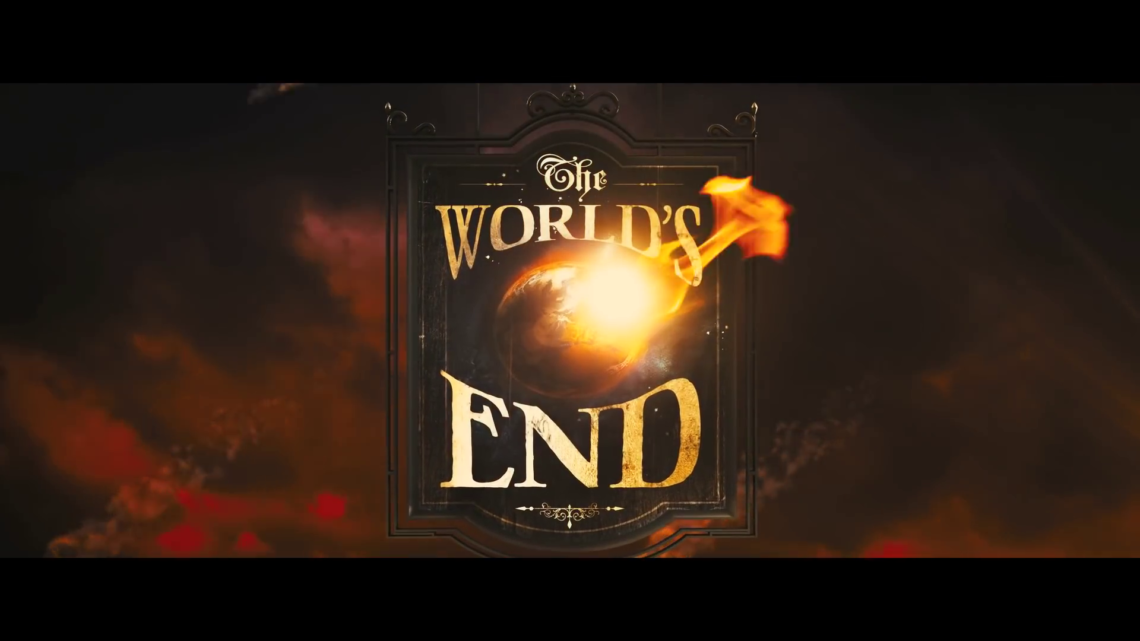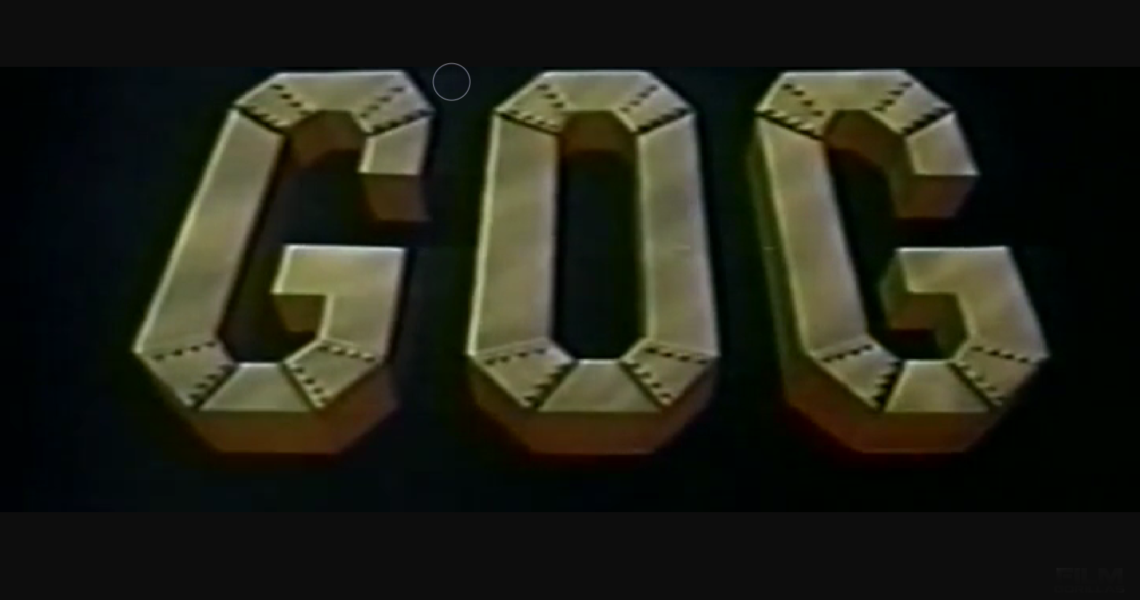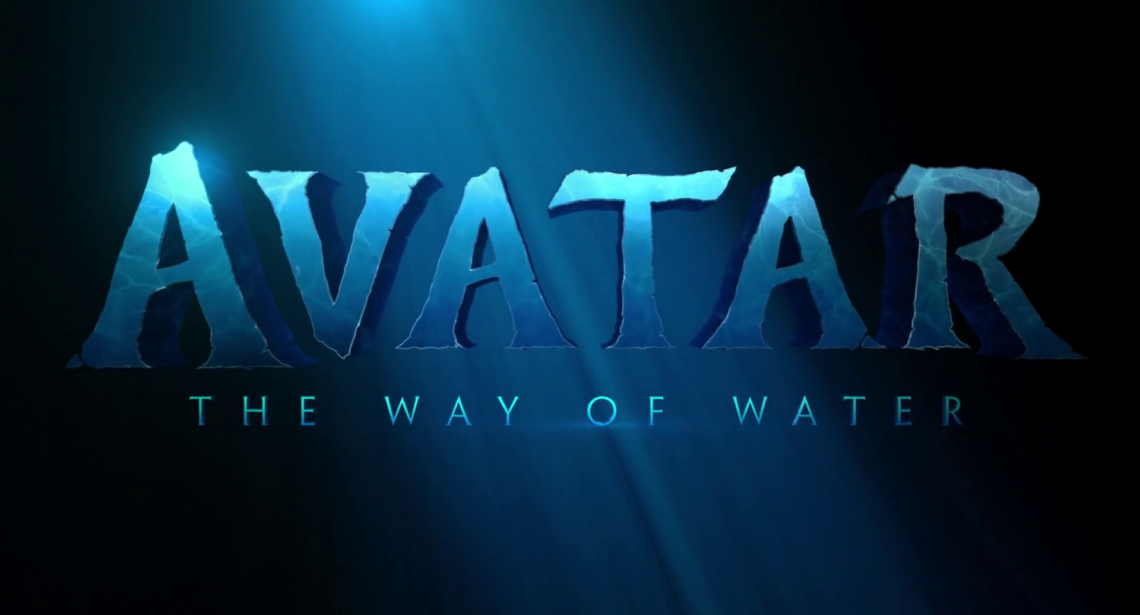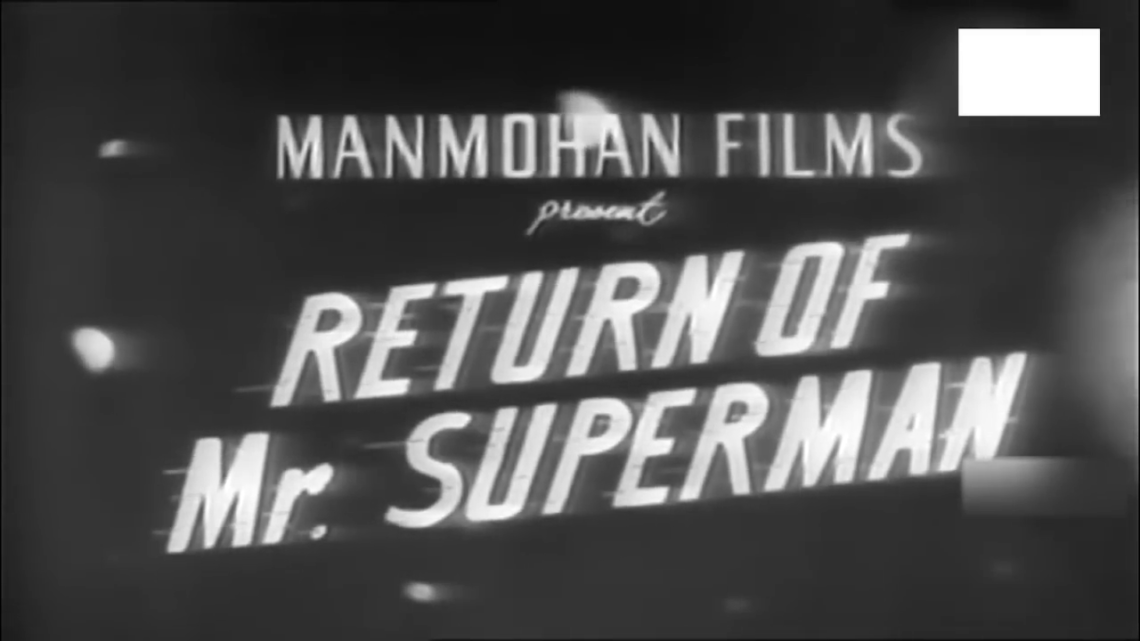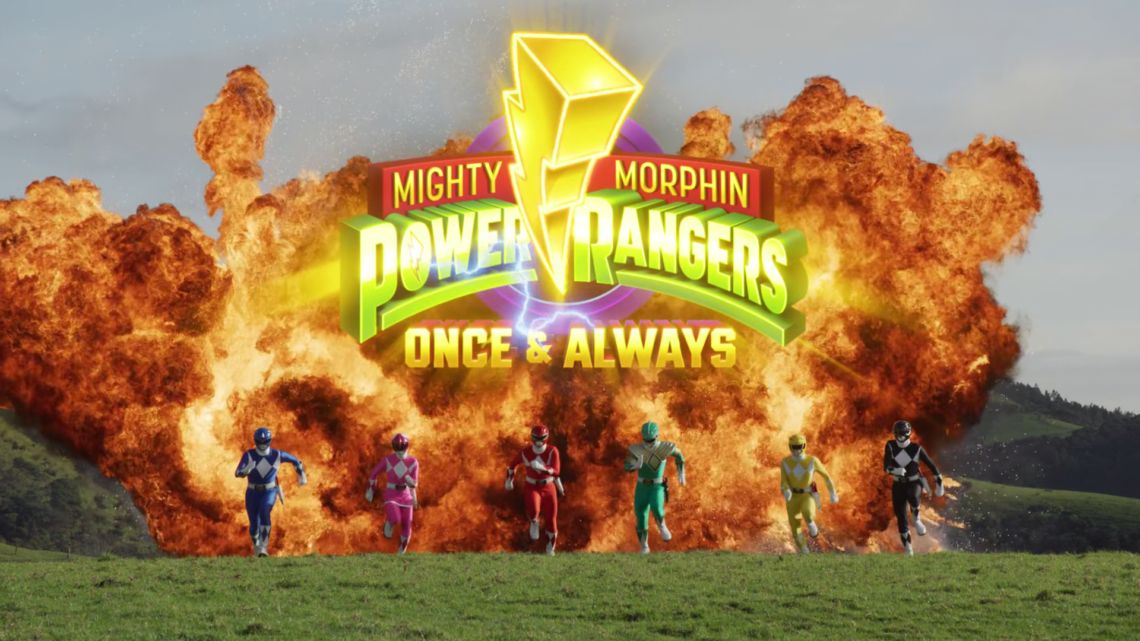-
#566 – Ex_Machina (2014)

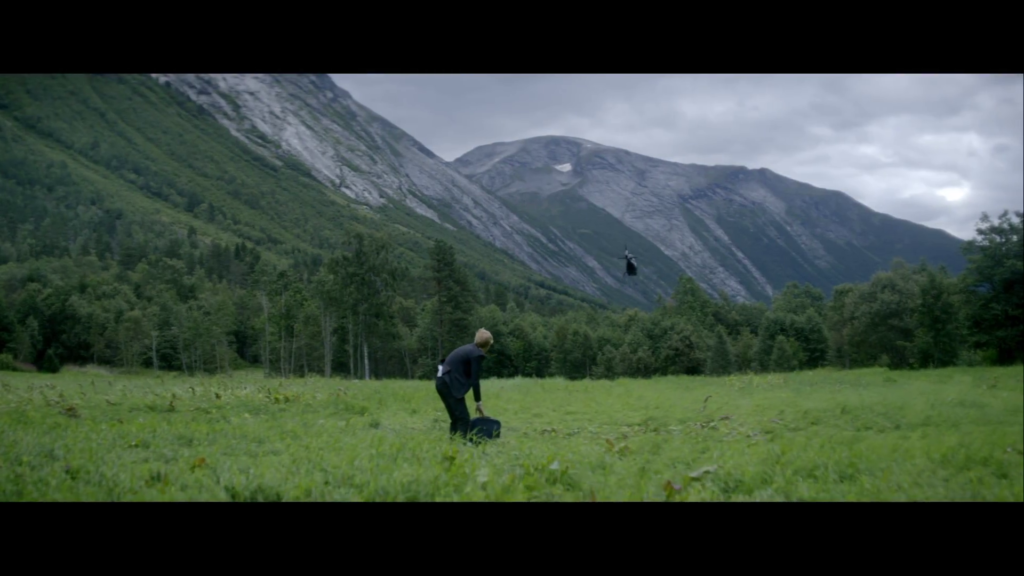
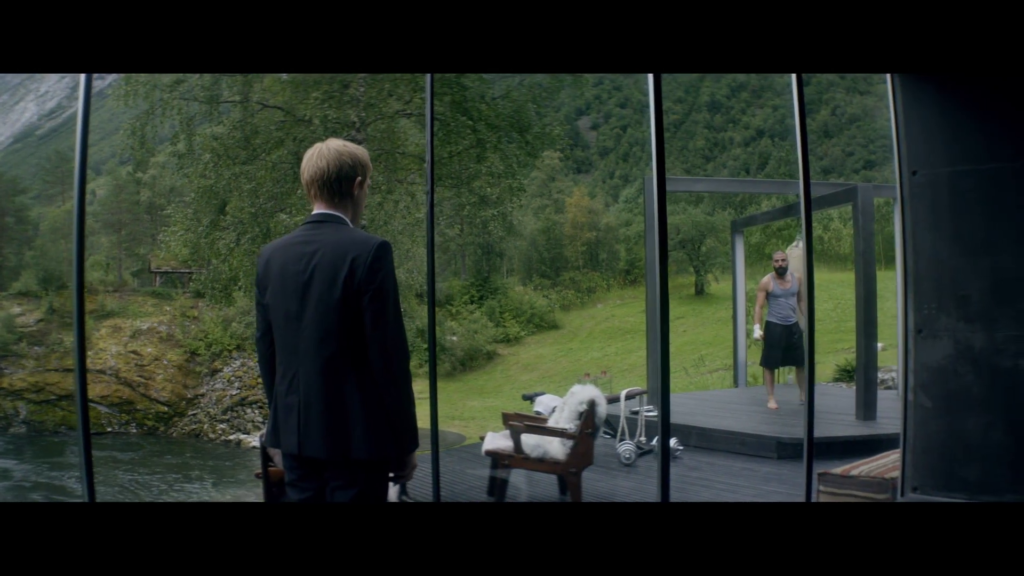
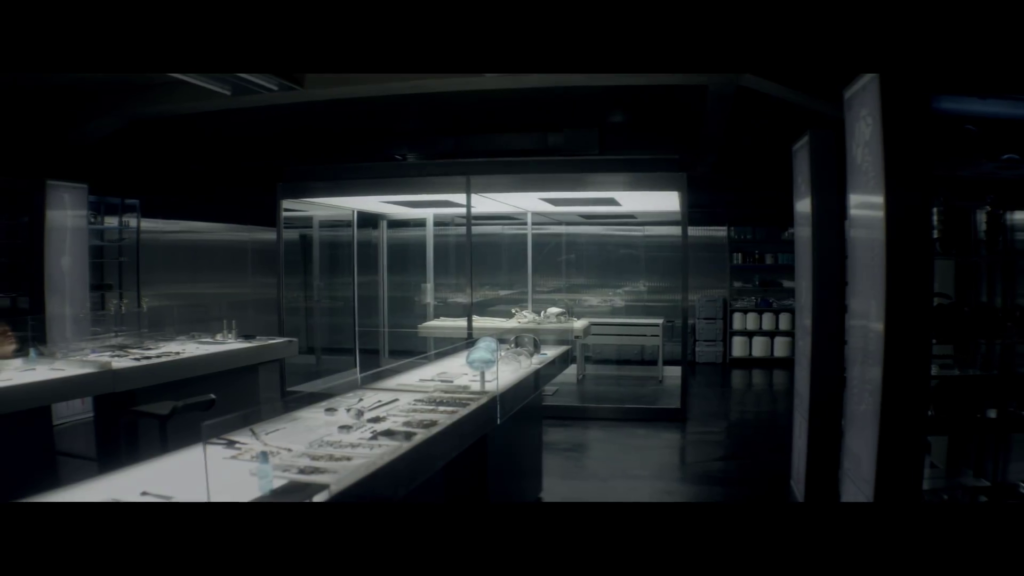

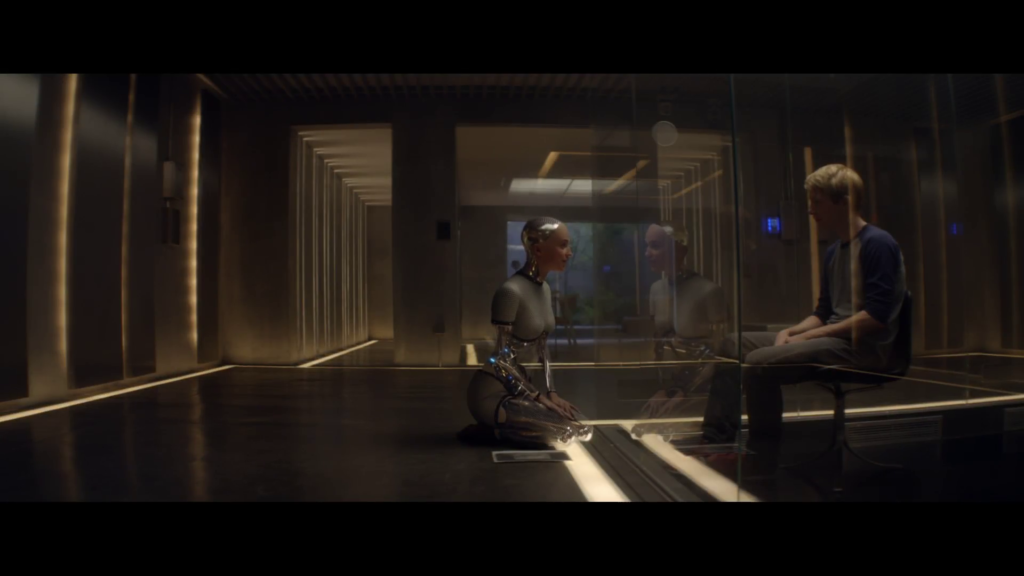
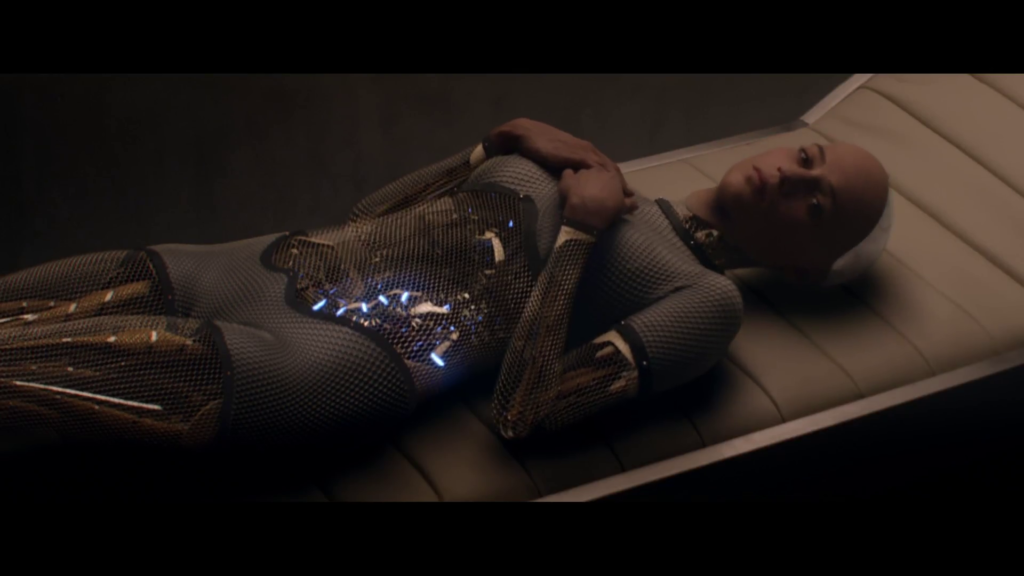
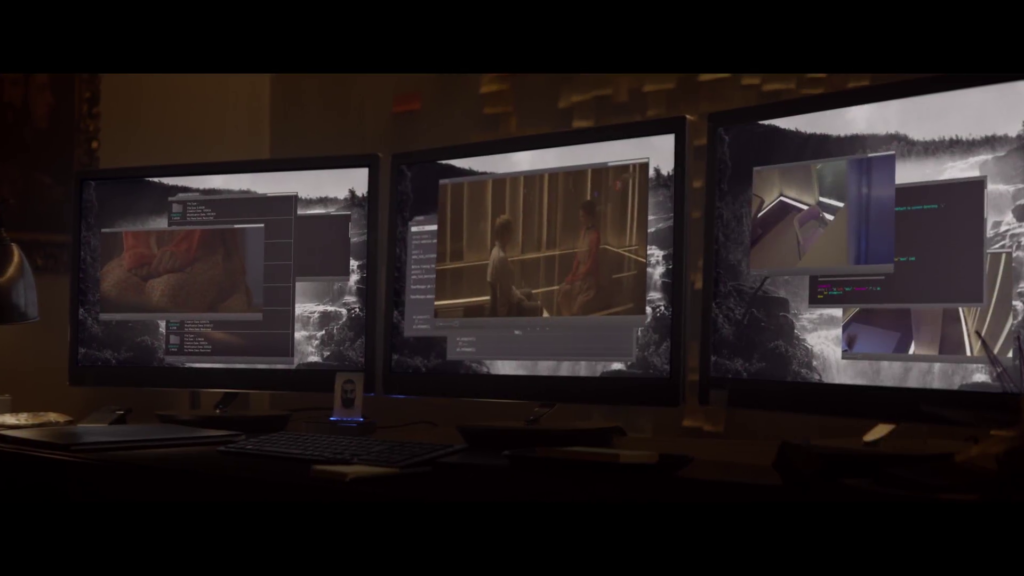
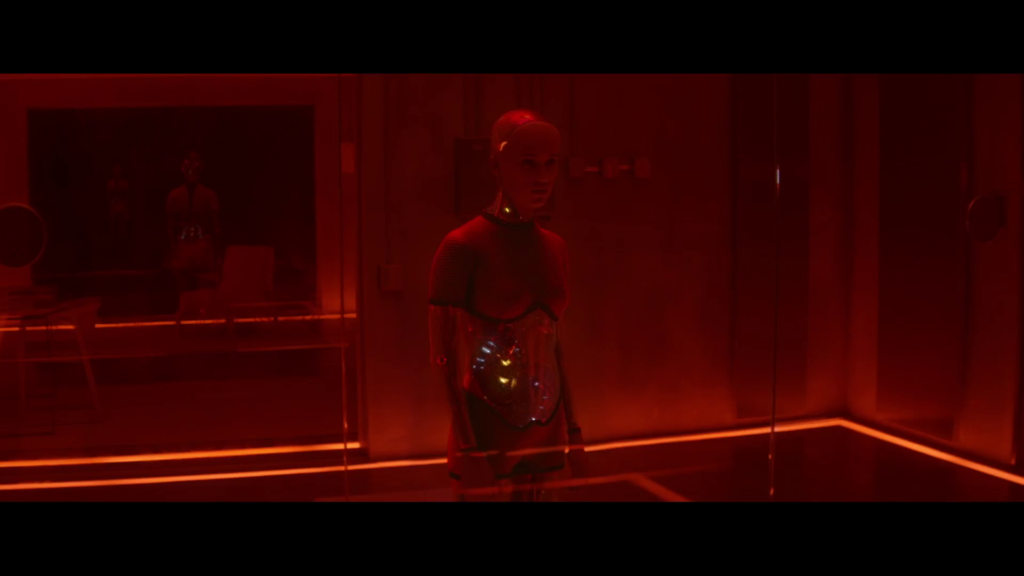

Ex_Machina (2014)
Film review #566
Director: Alex Garland
SYNOPSIS: Caleb is a programmer working at the tech company Blue Book, and wins a contest at random to spend the week at the remote home of the company’s reclusive CEO, Nathan Bateman. When Caleb arrives, he learns that there is more to his visit than he first realised, as he is being invited to meet an A.I. Nathan has built and to determine where he thinks it possesses true conscience…
THOUGHT/ANALYSIS: Ex_Machina is a 2014 sci-fi thriller film. In the opening, we see programmer Caleb Smith, who is working at the largest search engine company in the world, Blue Book. He is selected at random out of all the employees to spend a week at the home of the company’s reclusive CEO, Nathan Bateman. Upon arriving at Nathan’s remote home, Caleb learns that he is not there to merely hang out with Nathan: he is to meet Nathan’s latest invention, an A.I., and to evaluate whether he thinks it possesses consciousness. The film takes place over the course of the week, with Caleb’s conversations with the A.I. named Ava, as he (and us, as the audience) possesses intelligence. The film also keeps an element of suspense, as Nathan’s true intent opens up a number of questions about what Caleb is doing there, and who (or what) is real and what is an artificial intelligence. There’s not much action in the film, and it instead focuses on suspense and mystery. There’s also a lot of focus, as you might expect, on discussions around A.I., and the film invokes many theories around the subject. There’s a balance between exploring the subject in depth, but also keeping it interesting enough so that the average viewer doesn’t tune out, and there’s definitely times when that balance was not hot for me: I know a fair amount of the different conversations and arguments around A.I. , so I personally didn’t need too much of an explanation for everything, but when the film mentions things like the “Chinese Room,” or drops names like Wittgenstein without any follow up, you get the feeling that this film is oriented more towards those who would understand these things. Nevertheless, I think there’s enough content and intrigue regarding the set up to make it watchable for a more general audience, but not if they’re expecting something with a decent amount of action.
The characters present themselves as a fairly mixed bag: Caleb himself is pretty bland, and we don’t really see much of a personality, but I think this may be a deliberate choice to make Ava seem more human by comparison. Nathan is clearly meant to be a pretentious “tech-bro” CEO and unlikeable from the off, and they certainly succeed with that. He is actually very annoying to watch. Ava as a character has an element of the typical A.I. archetype you see in films, but also the film keeps open the question of what she is programmed to do, and what she herself intends, which adds a layer of mystery and intrigue. It’s perhaps no coincidence that Ava comes off as the most human character in the film. Nevertheless, all the acting is quite good, even if you don’t like the characters.
A lot of the film’s aesthetic and dialogue choices are very deliberate, but perhaps it’s easy to miss them. A lot of the dialogue between Caleb and Ava takes place with a glass partition between them, and it seems to be a recurring theme that there is always something that is separating the characters. Whether this is meant to signify that the two are two individuals that can never fully understand one another, or that there will always be a barrier between A.I. and life, is perhaps purposeful. The contrast between the expansive landscape shots that surround the house, and the tight corridors and windowless rooms again create a feeling that the house is a prison or labyrinth where the questions raised are somewhat disconnected from reality and experience. Ex_Machina is a slick, polished film that clearly has a had a lot of consideration put into how it looks, and how each aspect of the film invokes its themes. It tries to balance an in-depth exploration of its subject with also giving more casual movie-goers something to watch, but I’m not sure that balance is really there. The twists and developments of the film just weren’t too interesting or surprising, and I’m not sure the film has aged enough to provide any lasting significance, since the field of A.I. is changing and evolving very quickly. Maybe some people would find it gripping, but it didn’t quite hold my interest to make it entertaining.
-
#565 – The World’s End (2013)
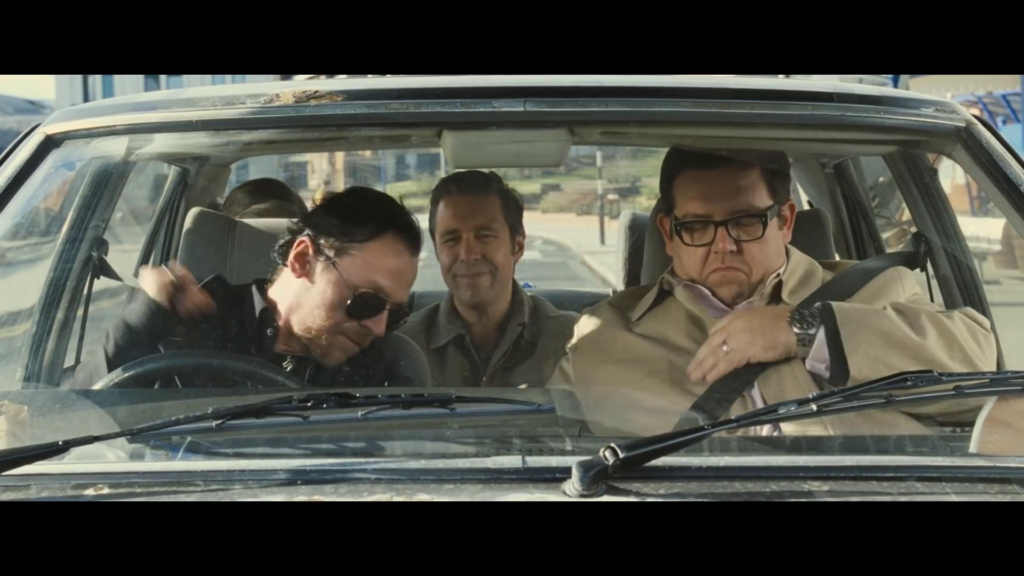
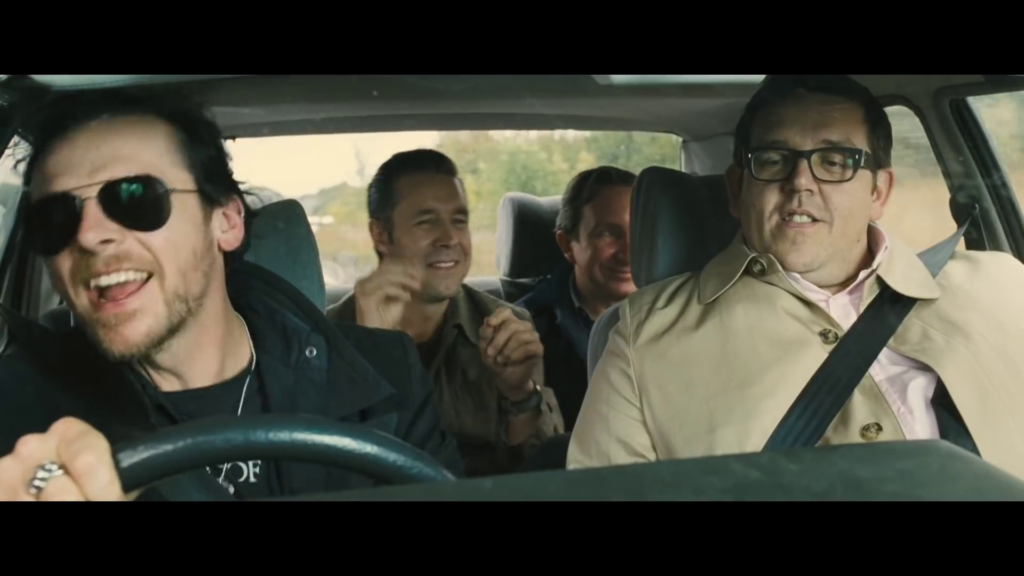
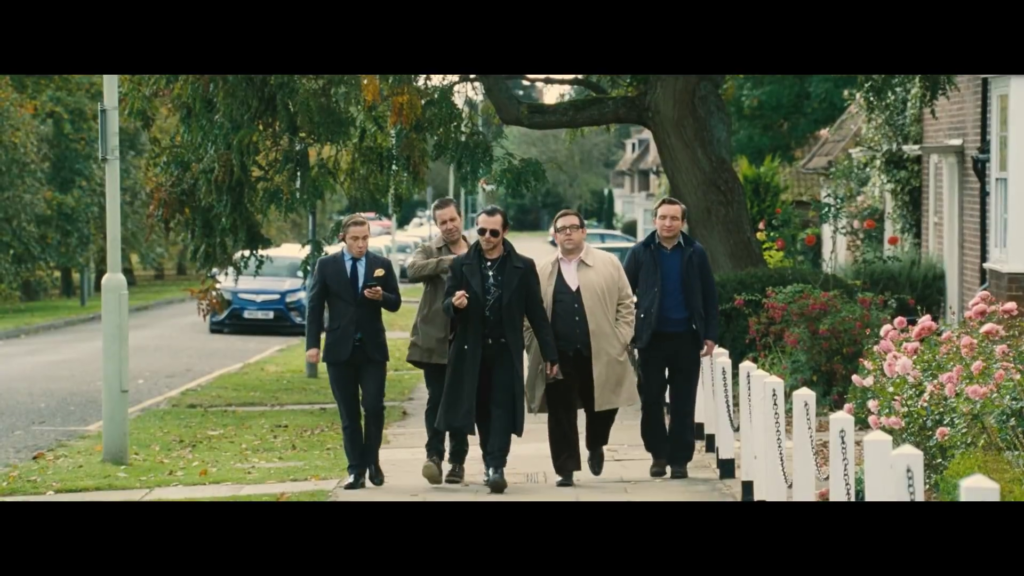
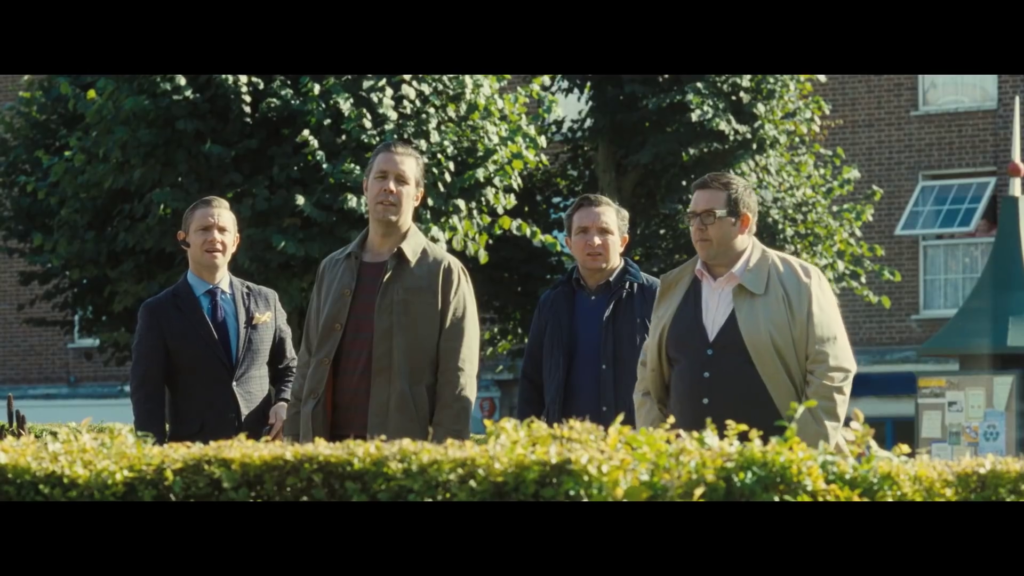
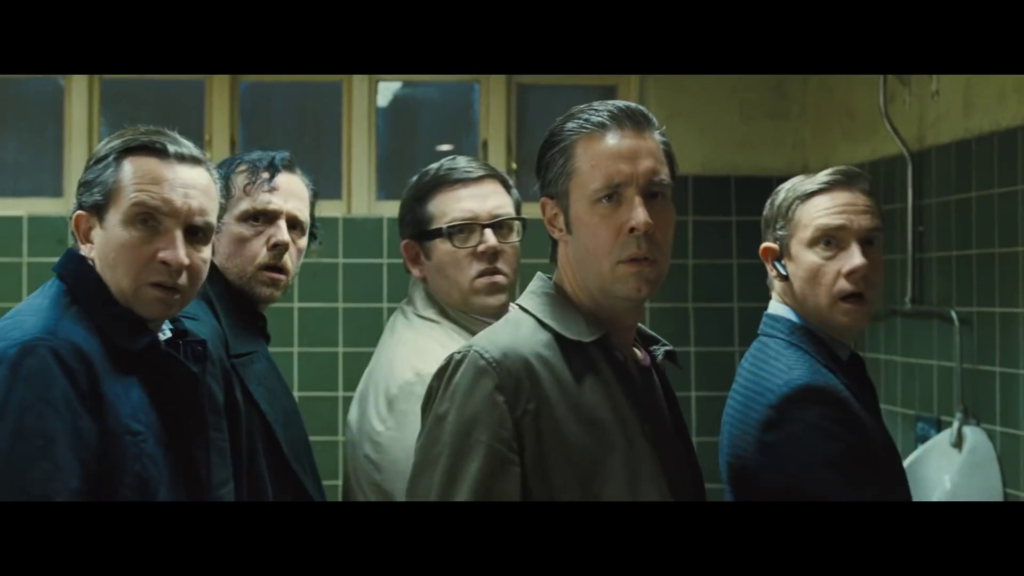
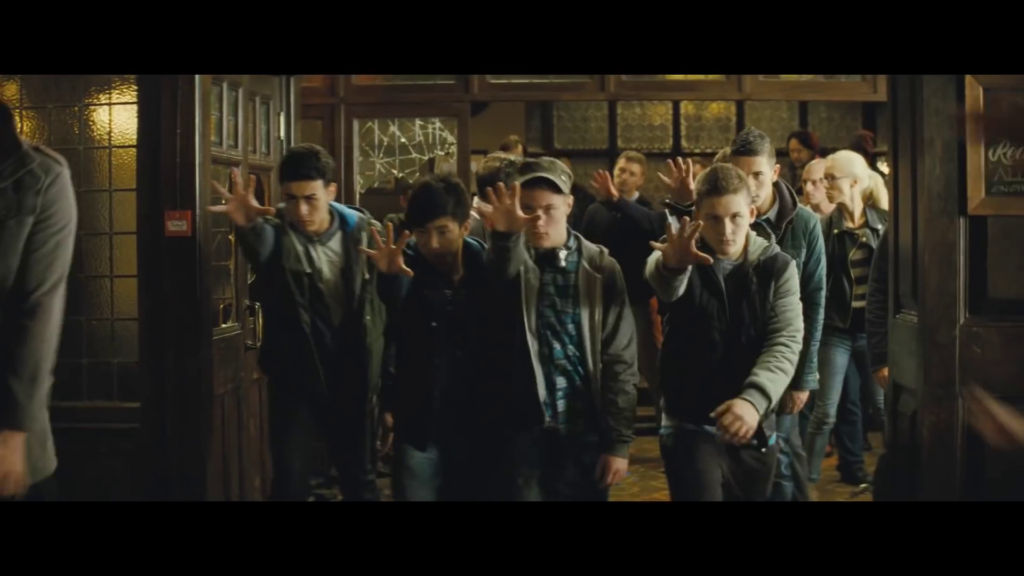
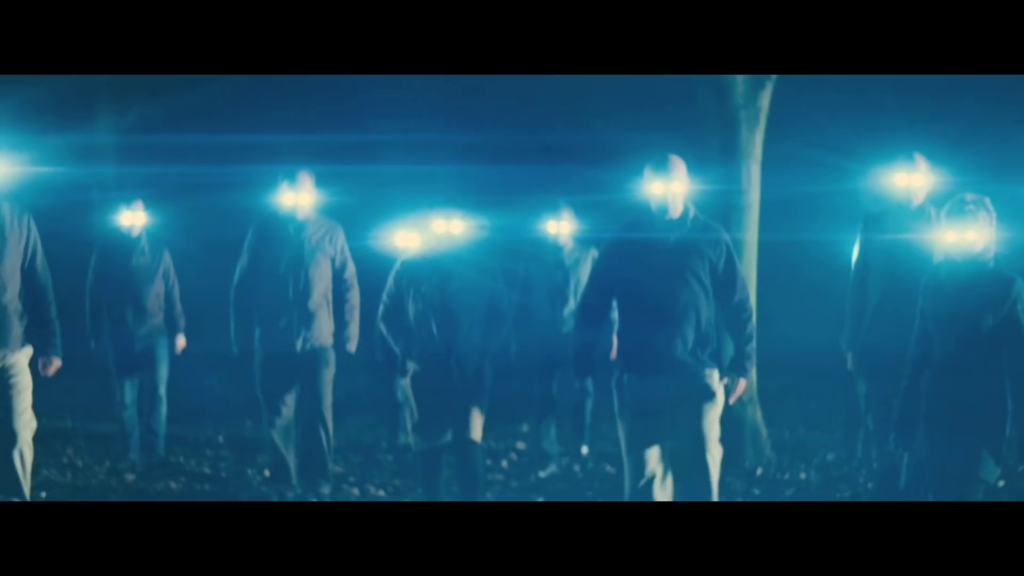
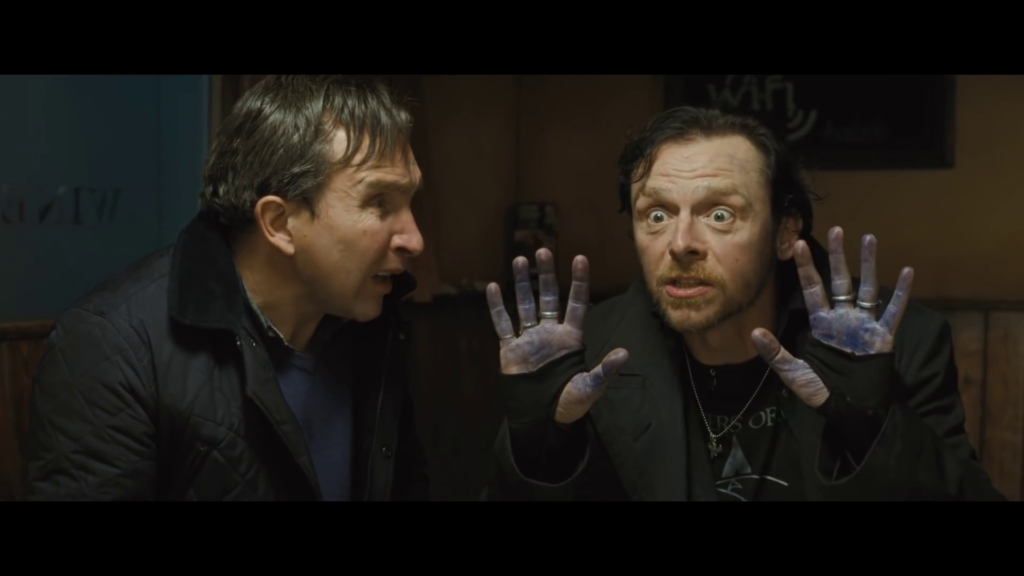
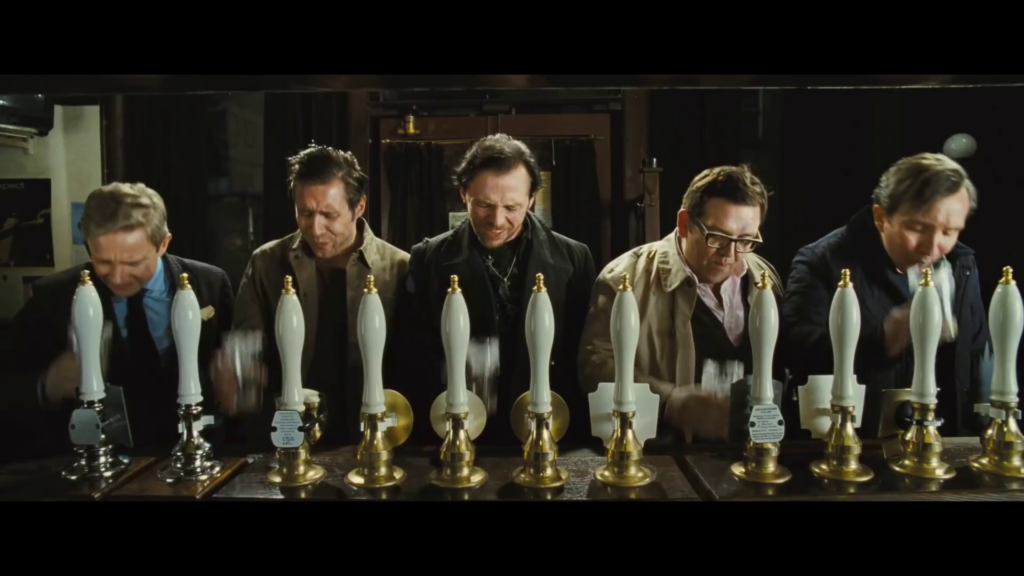
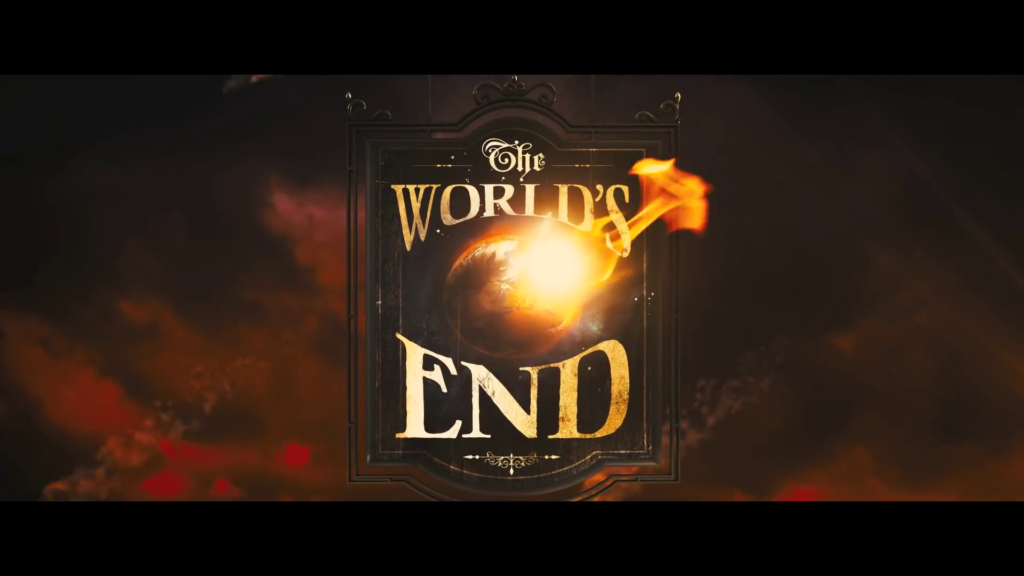
The World’s End (2013)
Film review #565
Director: Edgar Wright
SYNOPSIS: Gary King is haunted by a twenty year old memory of failing to complete the Golden Mile with his friends: twelve pubs, twelve pints that stretch across his hometown of Newton Haven. He decides to reunite the five friends and convinces them to travel back to their hometown to complete the task they began twenty years ago. However, as they undertake their legendary pub crawl, they begin to notice that there is something strangely different about their home town…
THOUGHTS/ANALYSIS: The World’s End is a 2013 filmed directed by Edgar Wright, and the third film directed by him and starring Simon Pegg and Nick Frost, with Shaun of the Dead and Hot Fizz being the previous two. in the opening, we see Gary King, a good-for-nothing tearaway, who decides to conclude some unfinished business from twenty years prior: a legendary pub crawl across his home town, with twelve pints across twelve pubs, concluding at the World’s End pub. Gary convinces his four friends, who now all have grown up with families and careers (apart from Gary, who is basically the same as he was in high school), and they return to their home town to try and finally complete their unfinished business. however, they find their home town has changed a little…in more ways than one, as they eventually discover that the town’s population has been taken over by robot clones by an alien intelligence who wishes to “improve” humanity’s behaviour to prepare it for acceptance in the wider galactic community. The film handles the split between the more down-to-earth premise of the beginning of the film, and the sudden turn to sci-fi strongly and smartly. But this shouldn’t be much of a surprise, given that Shaun of the Dead and Hot Fuzz also did the same thing with similar success. The World’s End feels like a continuation of what those film’s achieved in terms of storytelling and humour, delivering fast-paced dialogue, fight scenes and banter from it’s likable leads. poking fun at the trope of alien possession such as Invasion of the Body Snatchers, it provides a good setting for the characters to approach it in the guise of a pub crawl.
Simon Pegg plays the lead character of Gary King, an immature, good-for-nothing tearaway who hasn’t changed since his schooldays, and who presents us with a character we’re not sure whether to like or dislike: he exists as both someone who is problematic and an embodiment of some of the worst qualities of humanity, but also a reminder of who we once were as teenagers that quietly gets lost as the “real world” dawns upon us, highlighted by Gary’s four friends all having careers and/or families. They all provide a counterpoint to Gary’s antics, but Gary never feels outnumbered, as he’s always such a huge presence and takes control of conversations to turn them into high energy performances. Ultimately, Gary’s character arc doesn’t really get resolved in any final way, but that’s kind of the point: that people like him don’t fit into the grand plan, and that’s okay. The ending of the film isn’t able to match the rest of it, with the dialogue between Gary and the alien entity not having the same energy and witty wordplay as the rest, and the epilogue being the onset of the apocalypse may not be to everyone’s taste, but does little to sour the movie as a whole.
The film often feels like a refinement of the practices undertaken in Shaun of the Dead and Hot Fuzz, with Pegg and Frost doing their own stunts, high-octane action sequences, and quick, snappy wordplay which never misses a beat. The weak spots in the film are it falling short of following through on it’s theme of maturity, growth etc. in the end, and while it’s obviously going to be compared to the two aforementioned films, The World’s End doesn’t have those memorable moments that will distinguish itself and make you think of it on it’s own merit. The film definitely has plenty of polish and refinement, and the comedy, acting and general sense of fun are all top notch though, and make the film worth a watch regardless of any negatives that don’t sour the whole experience.
-
#564 – Chronical: 2067 (2020)
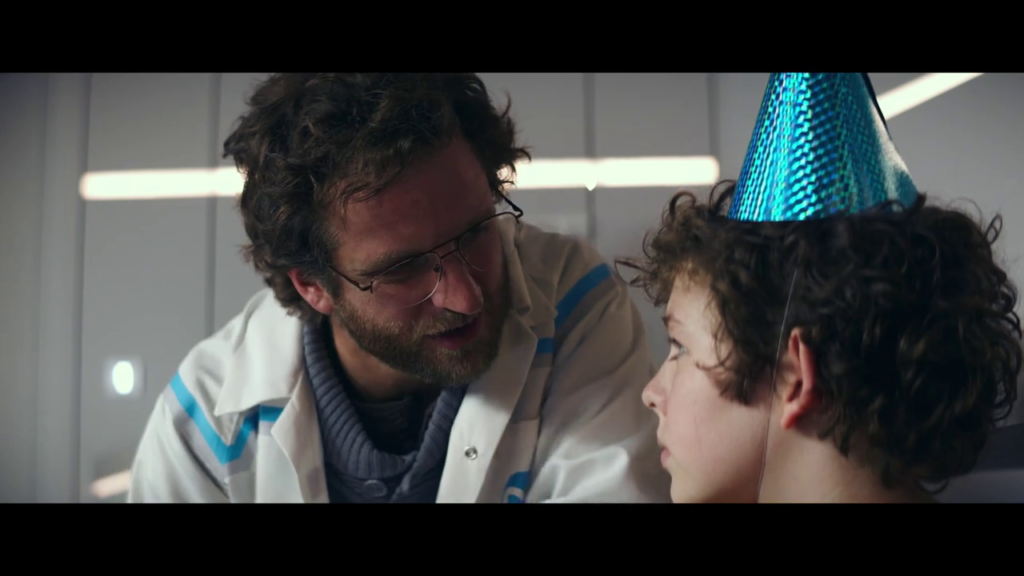
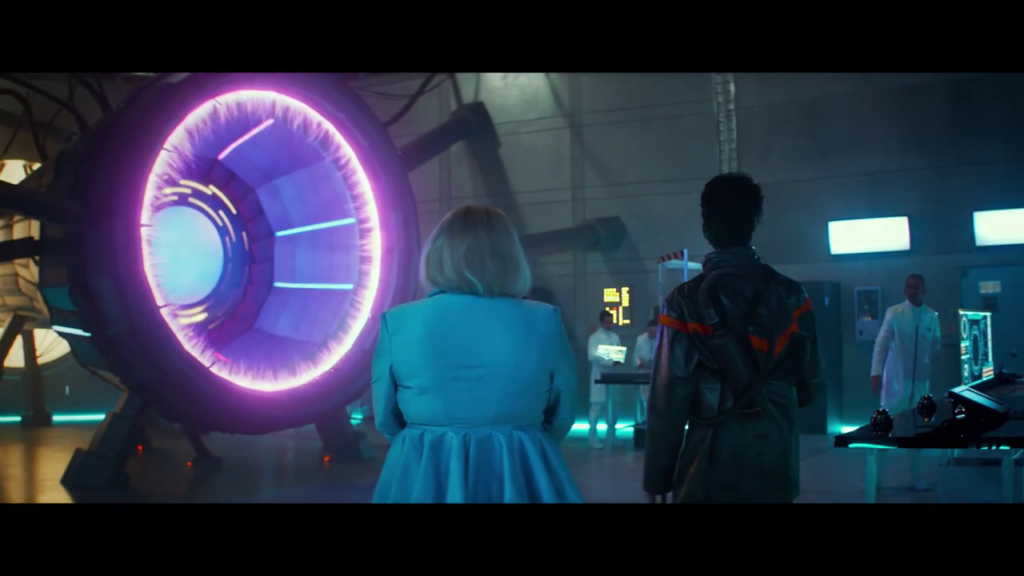
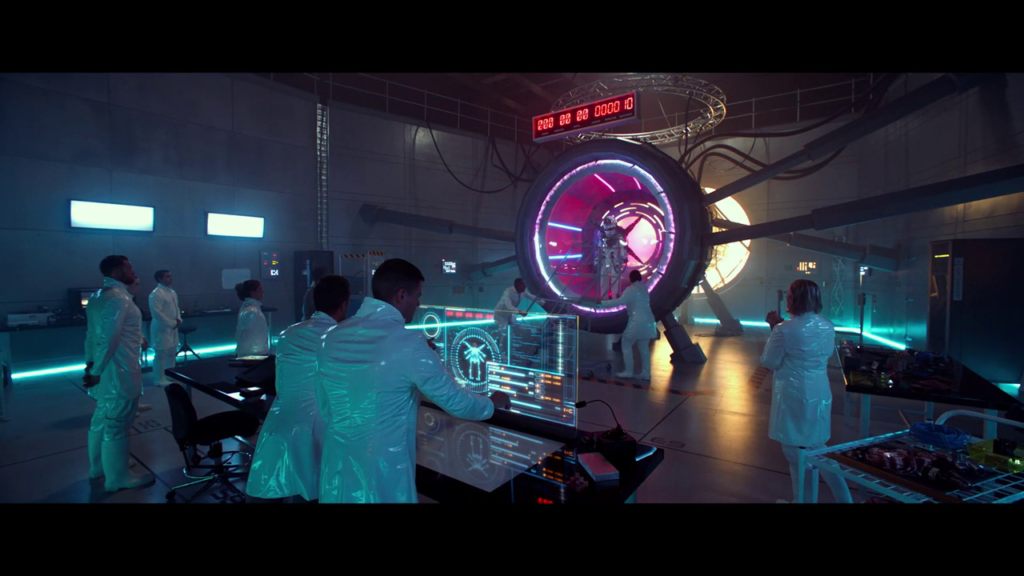
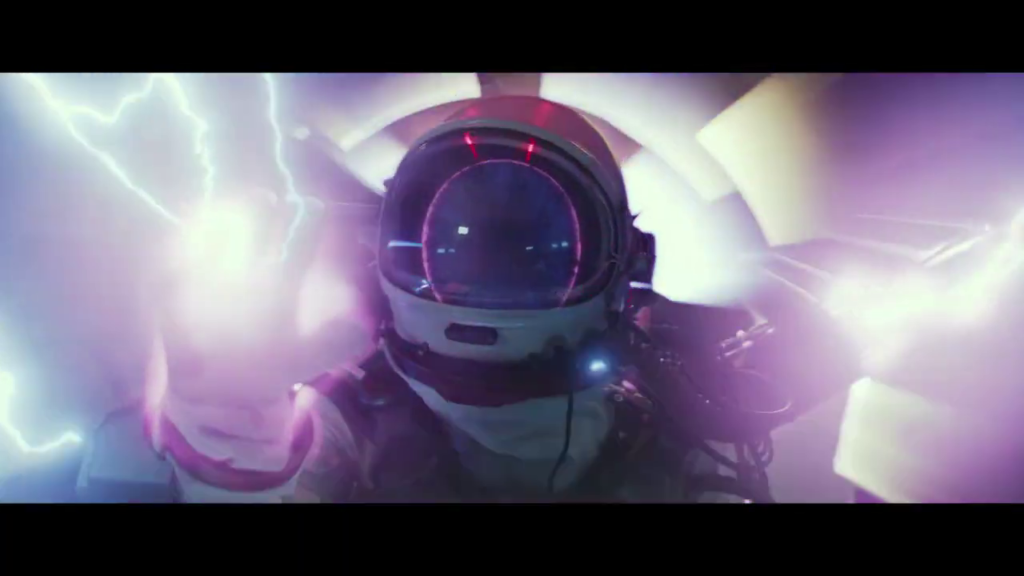
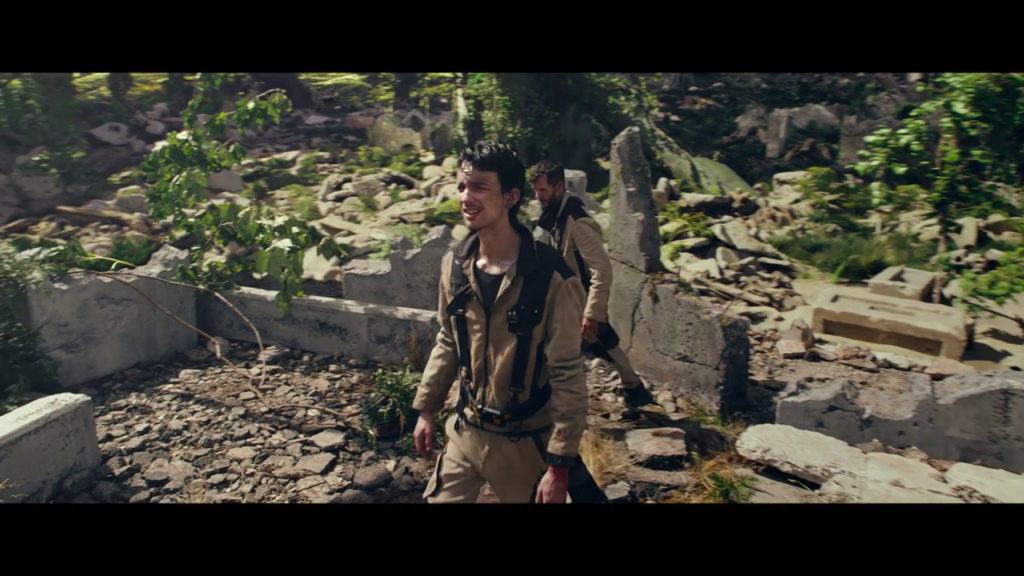
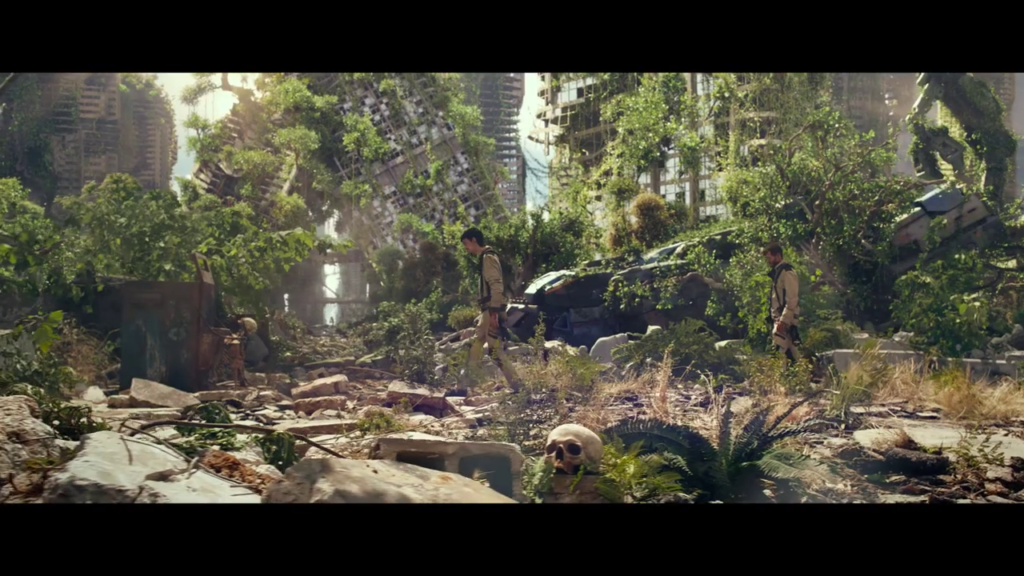
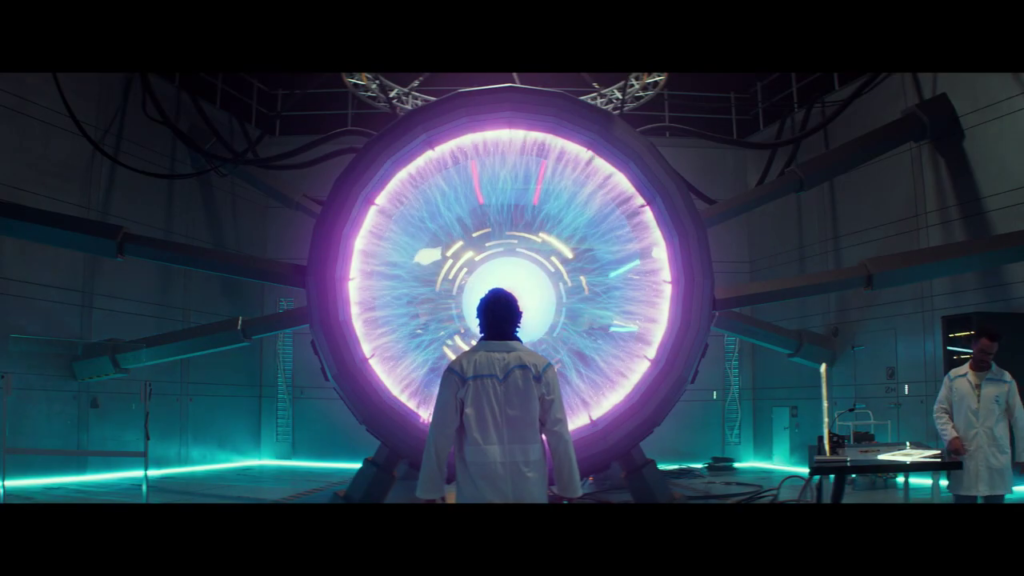


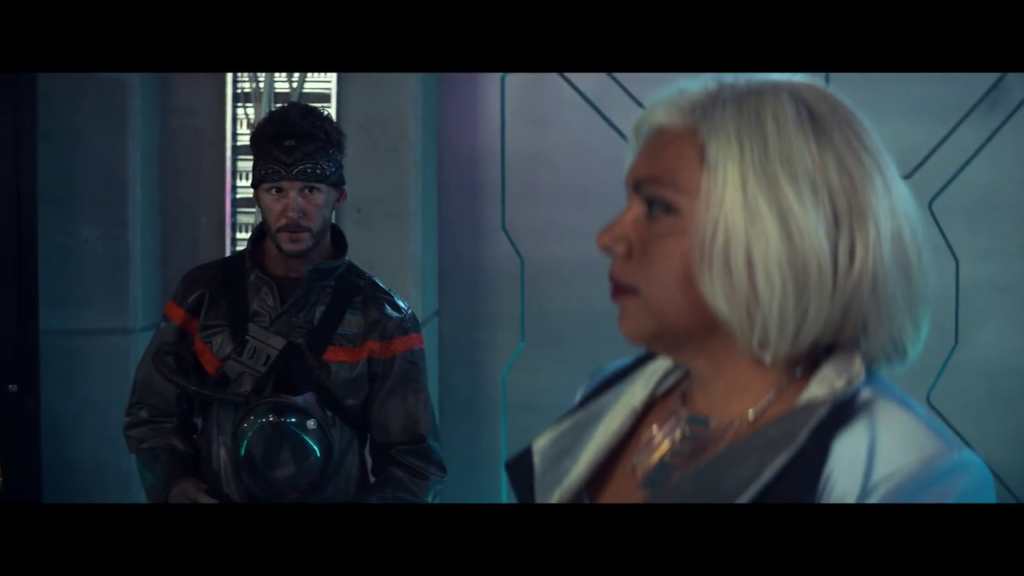
Chronical 2067 (2020)
Film review #564
Director: Seth Larney
SYNOPSIS: In the year 2067, Earth has suffered an almost complete ecological collapse. Humans survive only using synthetic oxygen, which has a side effect of making people sick. The only hope seems to be a top secret project by Chronicorp: a time machine that can travel into the future, where there is hope a cure can be found. However, the time machine has sent only one message through since it was activated: “Send Ethan Whyte”…
THOUGHTS/ANALYSIS: Chronical 2067 is a 2020 Australian sci-fi film. It is set in the year 2067, where Earth has undergone complete ecological collapse, and all plant-life has been wiped out. Humans only survives by breathing synthetic oxygen, which in turn gives them a deadly disease they call “The Sickness.” Ethan Whyte, a lowly technician, is called to Chronicorp headquarters where he is offered a job that apparently will save humanity: to travel to the future in a time machine to find a cure for The Sickness and bring it back, as the time machine has only sent a message from the computer that stated “send Ethan Whyte.” Since this indicates that someone is alive at the other end, it is assumed that the future has a cure for the sickness, since someone would have had to have sent the message, and Ethan agrees to go because his wife also has the sickness. The film attempts to create a lot of suspense and mystery surrounding the fate of the world, the message sent, and the disappearance of Ethan’s Father, but the main problem is it never really comes together, and neither are the situations Ethan is thrown into ever filled with that atmosphere. It’s fairly obvious that there is something more going on than has been revealed, but it never really builds up that mystery and suspense to keep the audience guessing. Typical story elements such as an estranged relationship with a Father, for example, further cement a feeling that you’ve seen it all before.
The characters are also fairly typical, and even though there’s an attempt to build them up, there’s not enough of a hook to make them solid pillars to the film. Coupled with some flat acting here and there, it overall just feels like it’s difficult to immerse yourself in their world and the setting. There’s some nice visual effects that are able to put you more in the main characters shoes, but there’s never enough to balance out the lows. Overall, there’s not much else to say about Chronical 2067: it presents a fair amount of mystery and a basic amount of intrigue, but never the suspense or drama that it needs to in order to hook a viewer into the mystery. There’s a constant feeling you’ve seen a lot of it before, and done better. It’s not terrible, and there’s some good ideas, but there’s perhaps too many of them, and they never properly cohere into a strong narrative, or the sheer multitude of them just make the characters walking tropes that splinter off every which way, so they too never become individual personalities that can drive forward the story. A classic case of good ideas, bad execution.
-
#563 – Gog (1954)
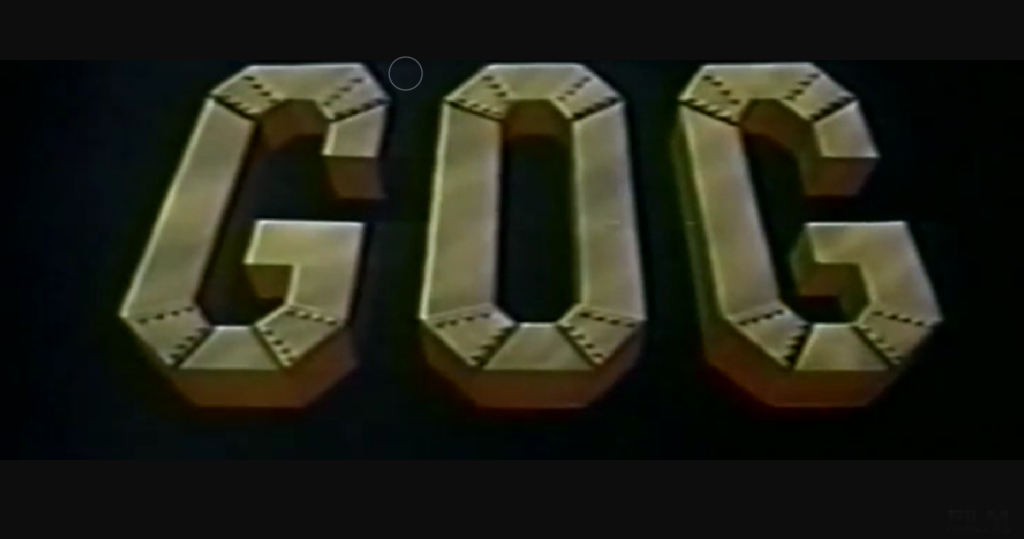
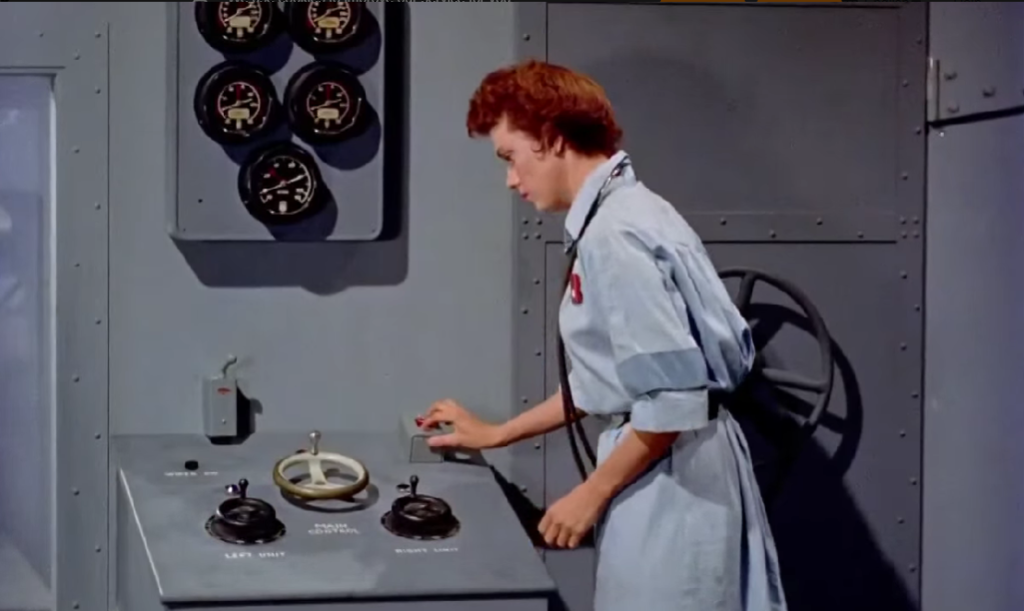
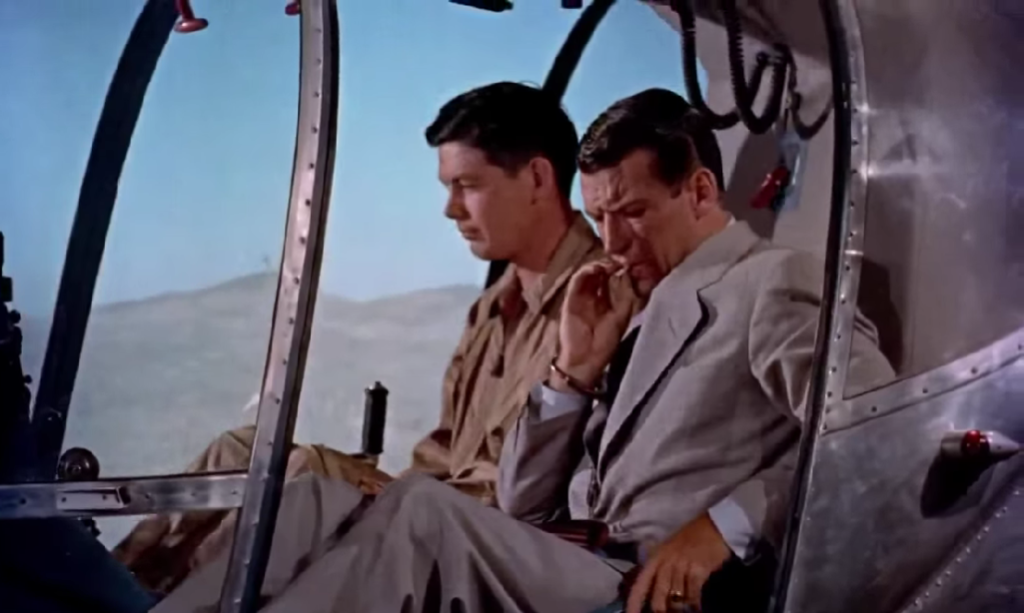
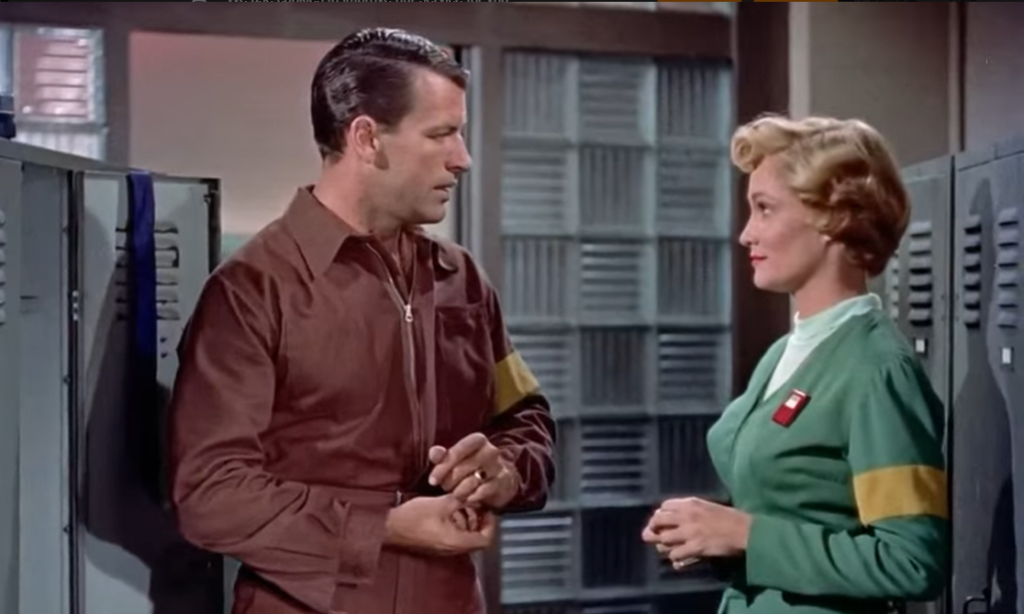
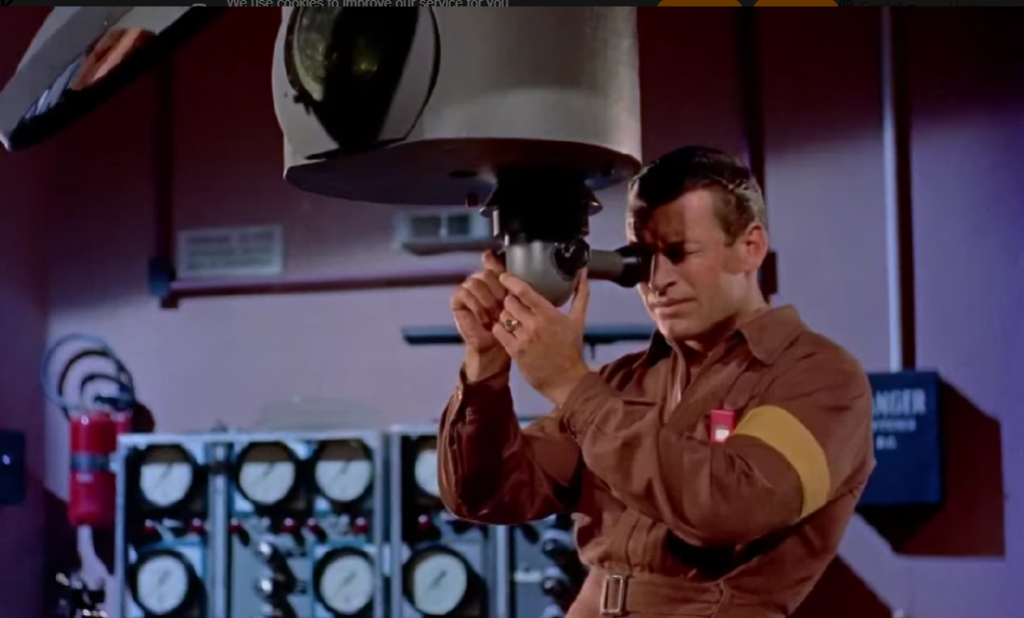
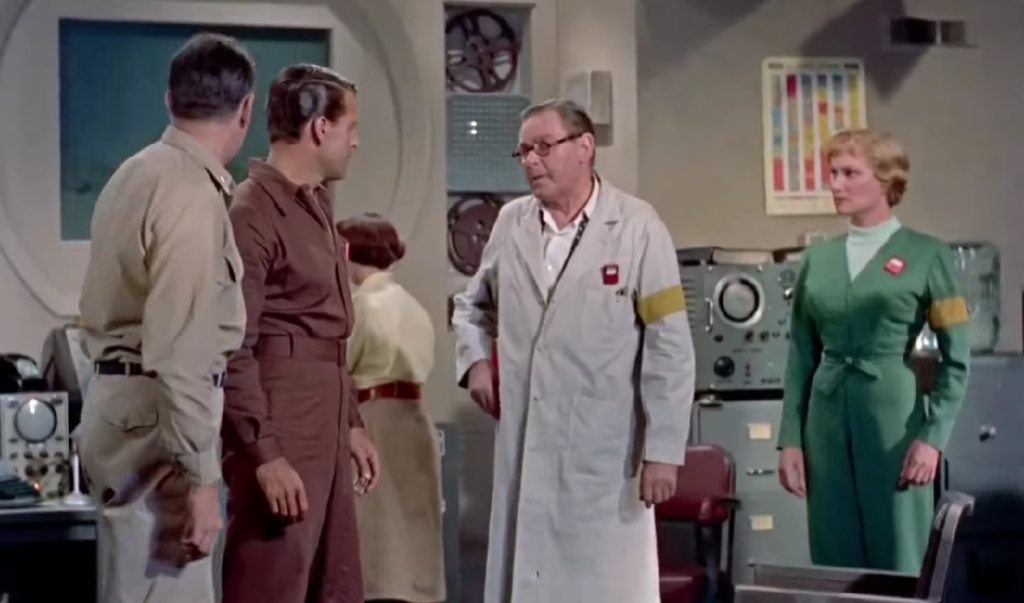
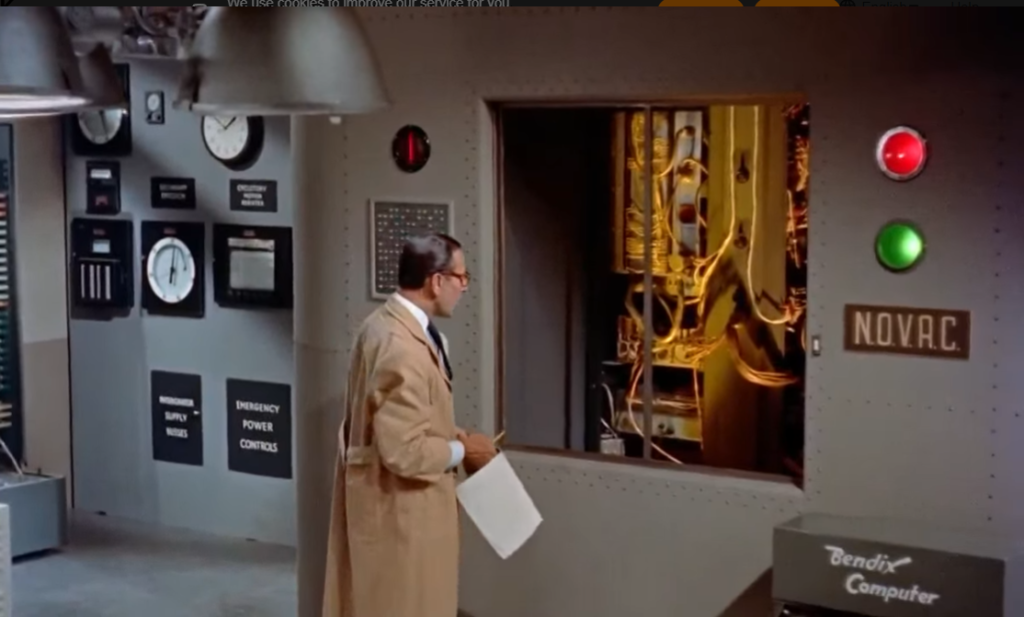
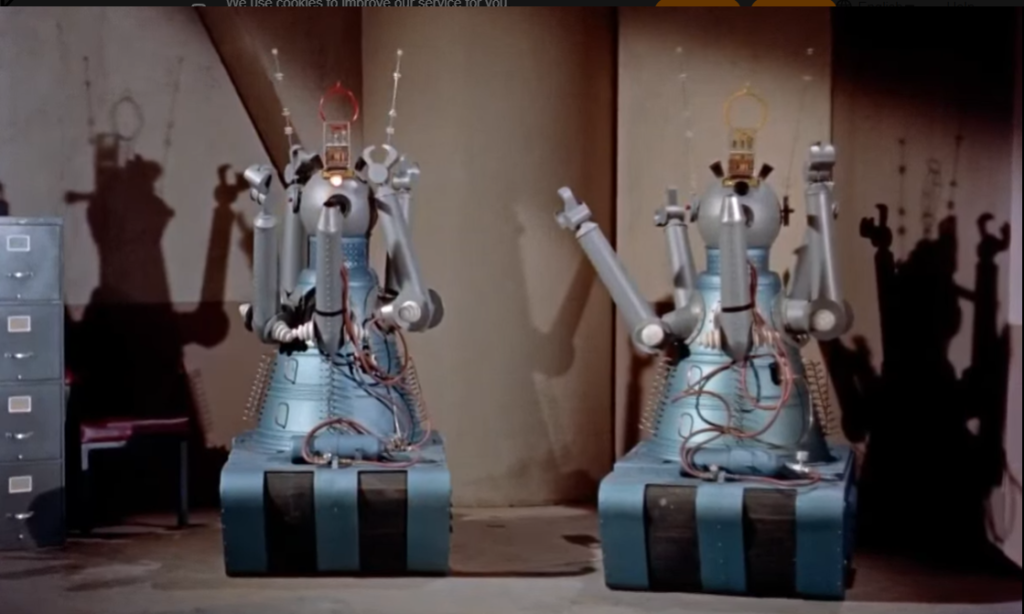
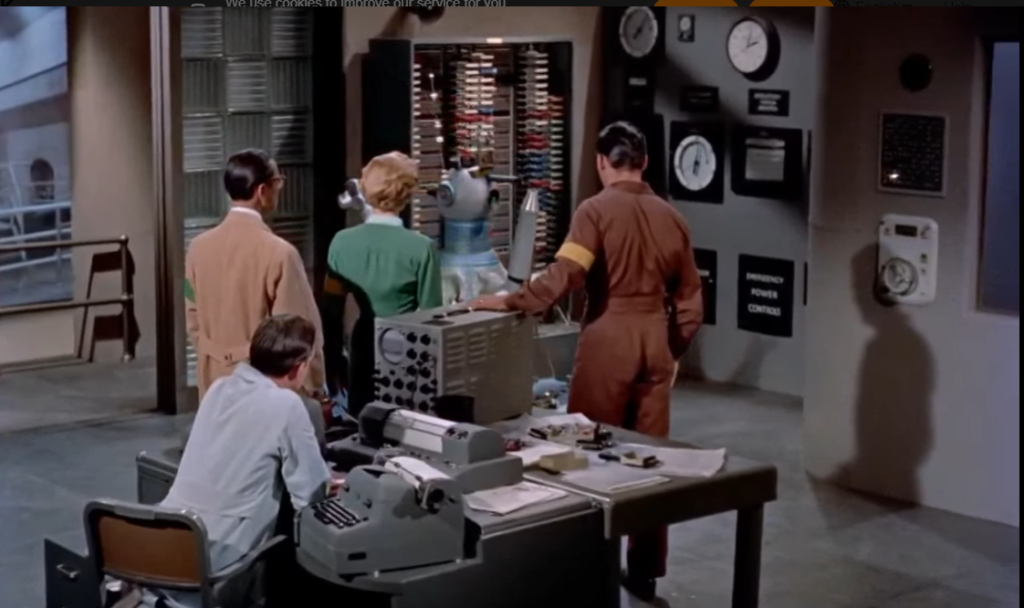
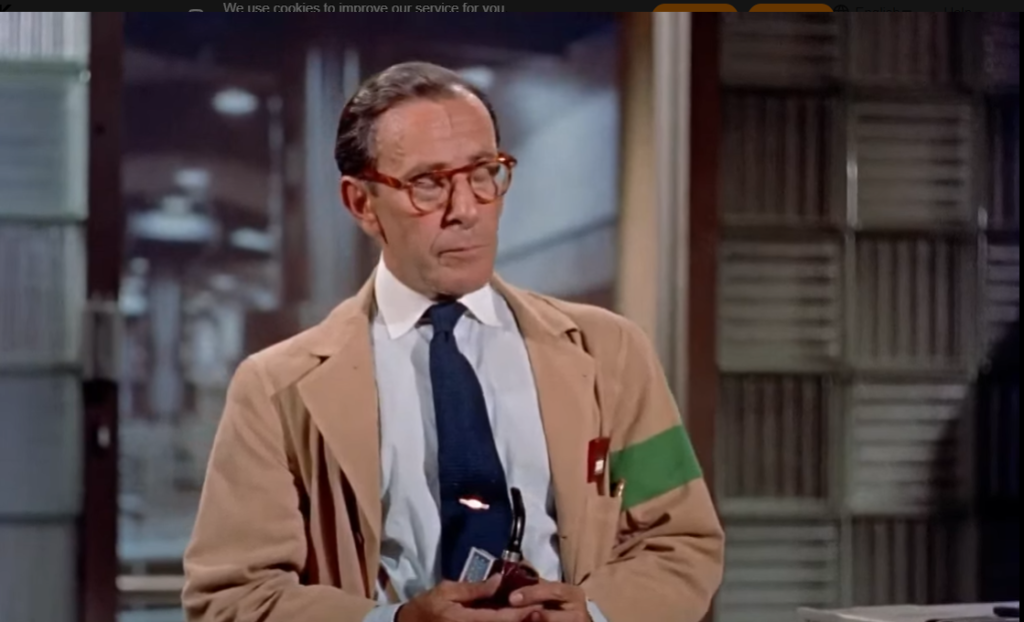
Gog (1954)
Film review #563
Director: Herbert L. Strock
SYNOPSIS: A series of unexplained malfunctions at a top-secret government facility in New Mexico leads to suspicions of sabotage, and the Office of Scientific Investigation (OSI) send Dr. David Sheppard to investigate the facility. As some of the scientists are killed under mysterious circumstances, it becomes a race against time to unravel the mystery before more people are killed…
THOUGHTS/ANALYSIS: Gog is a 1954 sci-fi film. It is the third of a trio of films independently produced by Ivan Tors that feature the Office of Scientific Investigation (OSI) in some form. This time, we see Dr. David Sheppard travel to a top secret government research facility in New Mexico, where strange malfunctions have been occurring which is suspected to be sabotage. As a number of prominent scientists die under mysterious circumstances, Sheppard must work out who is responsible, and stop them. Like the other two films produced by Ivan Tors, The Magnetic Monster and Riders to the Stars, the film goes heavy on science fact more than science fiction, with it going into a fair amount of detail on the structure of the facility, radiation, the different projects etc. There is obviously a lot of consideration and thought that has gone into getting everything as accurate as possible, but the downside to this is that there are a lot of scenes which are just standing around talking exposition. The things they are talking about would probably have been a lot more interesting and “futuristic” back in 1954, whereas today all the talk of computers and radiation might seem a bit mundane. Another problem with all this dialogue is that it breaks up the flow of the story quite a lot, so it struggles to maintain energy throughout, and leaves you wondering just what you are supposed to be paying attention to.
The characters are probably the weakest element of the film: the main character, David Sheppard, is just the typical male lead, and him being a scientist of some sort doesn’t really play into the story. The story does have more than one female character at least, but the main female lead just serves as an assistant/love interest for the male lead just like every other film of the time. The rest of the cast are the various scientists that are in the research facility, each of which has a research specialty, and come from a different country (reflecting the U.S. tendency to recruit scientists from their enemies in World War II). The different subjects are again explained and provide a bit of variety, but again, the characters themselves don’t really stand out: they’re all just middle-aged or elderly men in white lab coats.
The most interesting aspect of the film is the NOVAC computer, which apparently controls most of the functions of the facility. Again, this is one of those things which wouldn’t be too interesting nowadays, but back in 1954, having such a computer and having it explained in such detailed would have been fairly novel. We also have the two robots, which again look clunky and cheap nowadays, but have a life of their own which would have been impressive: even more so because the film is a rare colour sci-fi film, like Riders to The Stars, so the sets and props really stand out compared to many other b-movie films. There’s a nice amount of detail, and the setting is well constructed, to give it an authentic, yet futuristic feel. Also, the finale of the film just has everyone fighting with flamethrowers, so that’s pretty cool if nothing else. Overall, Gog is a neat little movie that has plenty of substance and detail, relying on science fact rather than science-fiction. The drawback to this is that a lot of explaining what is going on is required, and halts the momentum in the story constantly. The clear effort put into the science and the design of the sets and robots does make the film stand out from it’s contemporaries as well as being in full colour, but it’s shortcomings mean the film is very much a mixed bag.
-
#562 – Avatar: The Way of Water (2022)
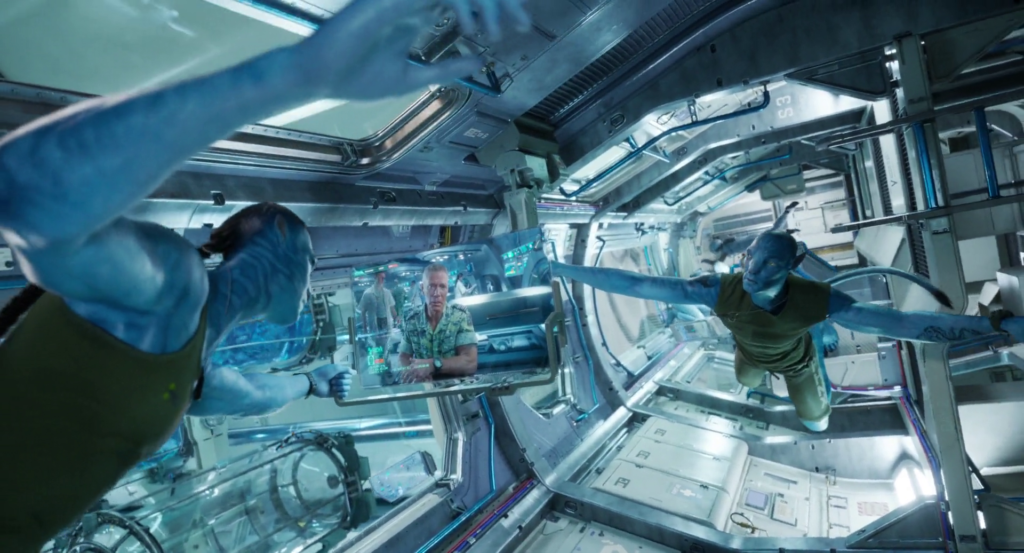
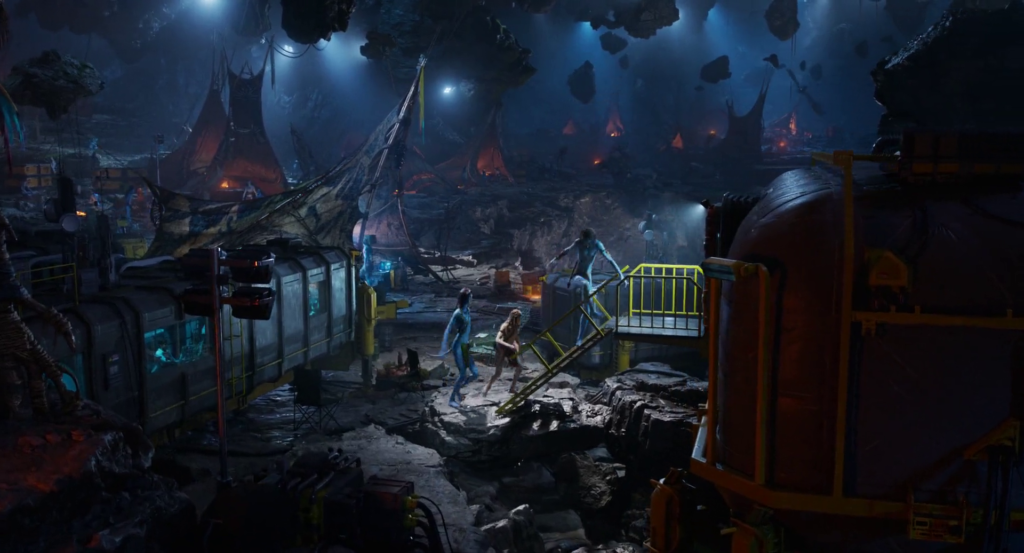
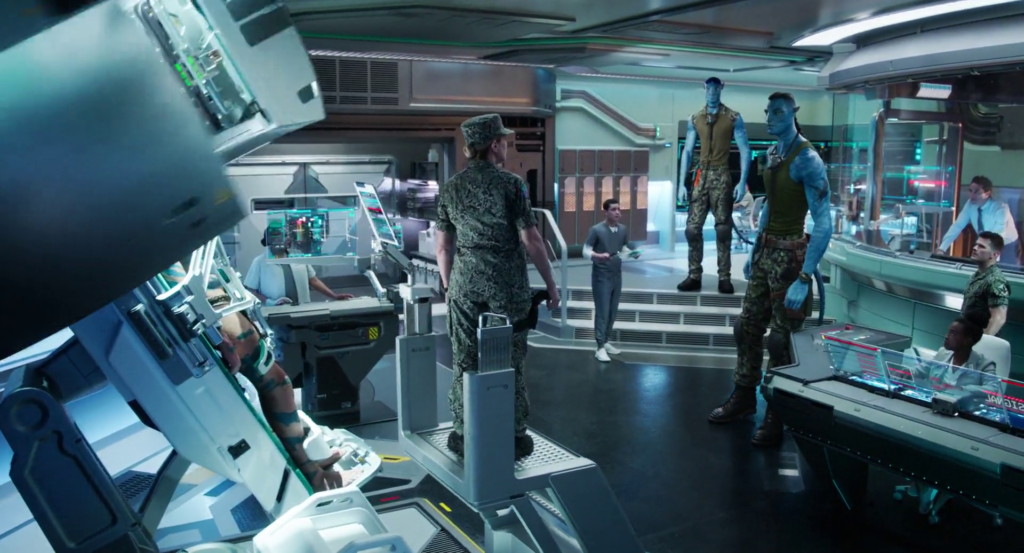
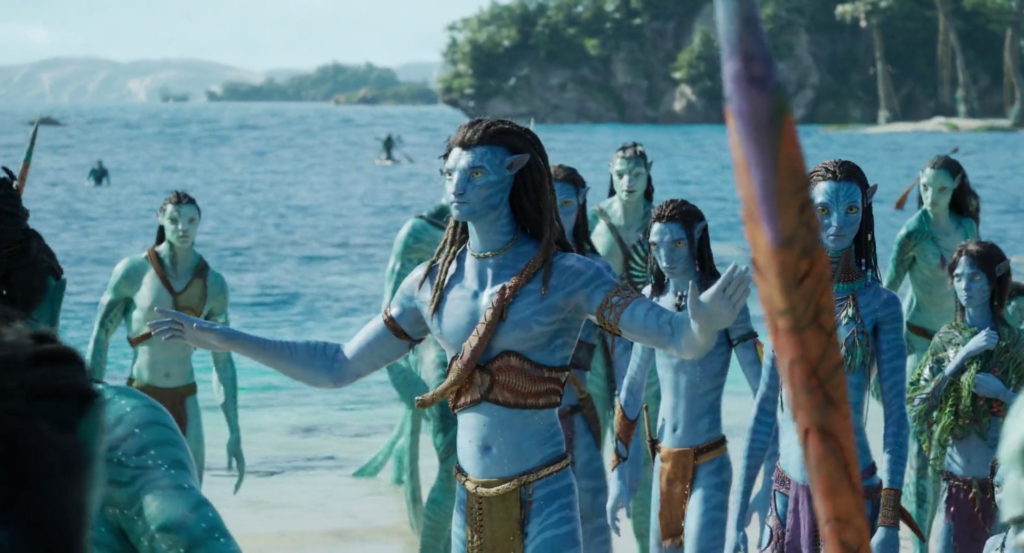
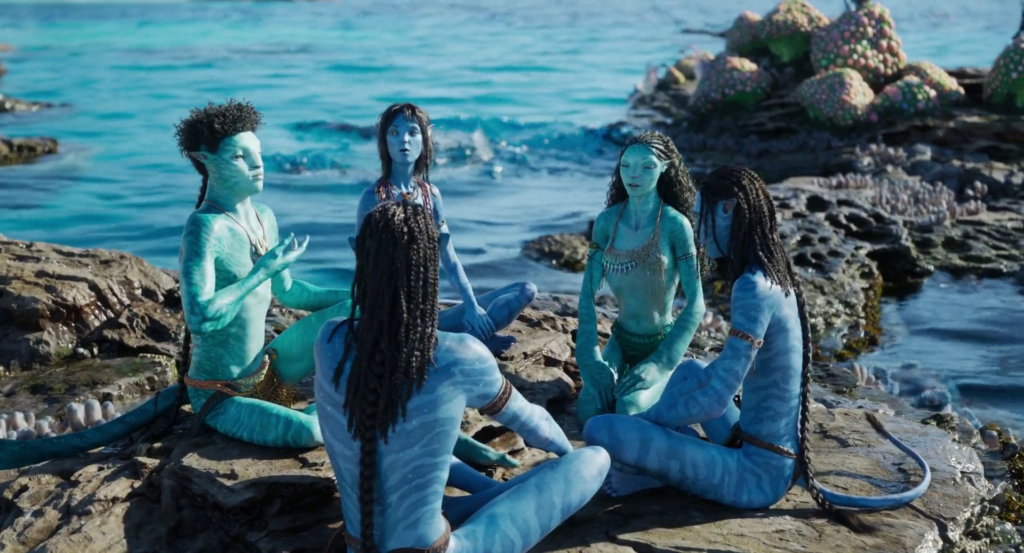
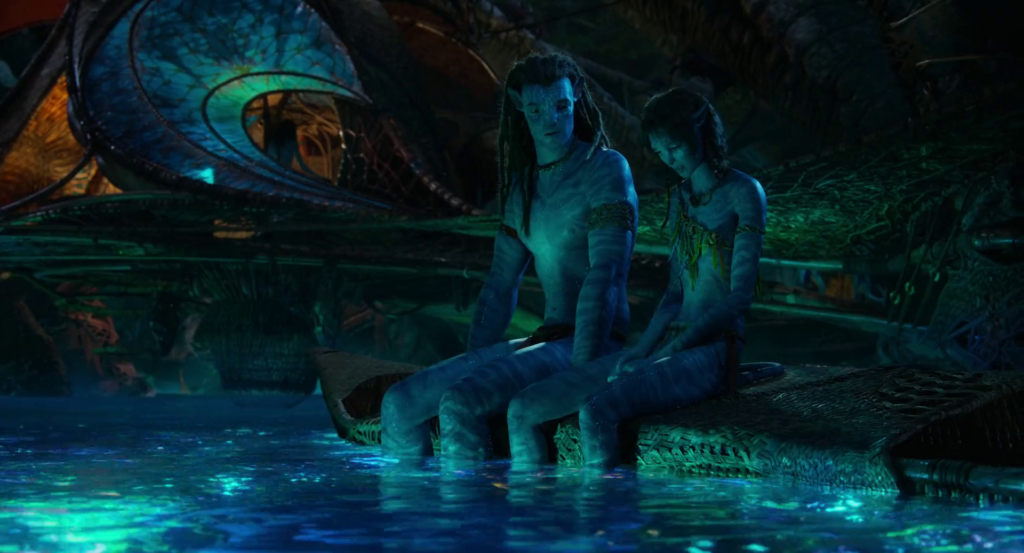

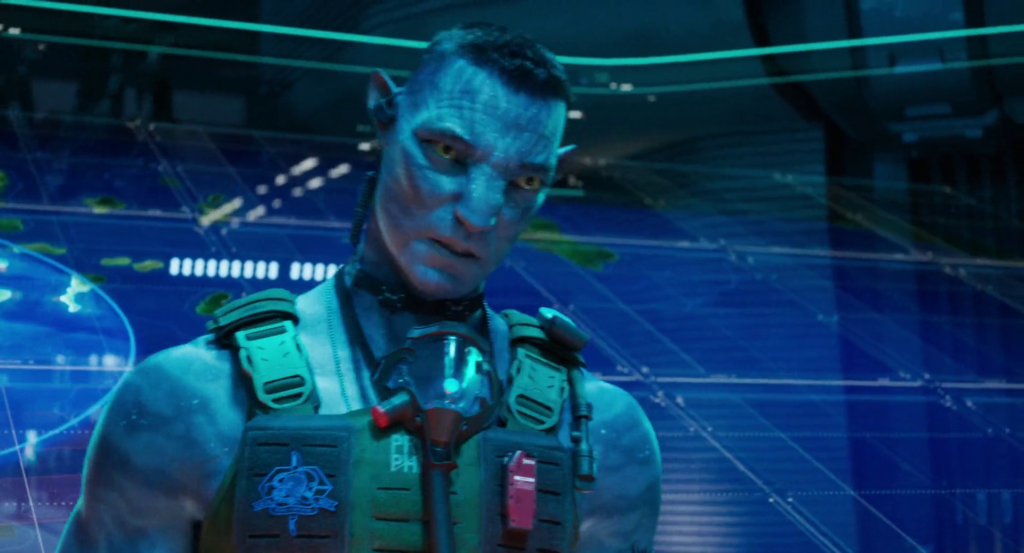

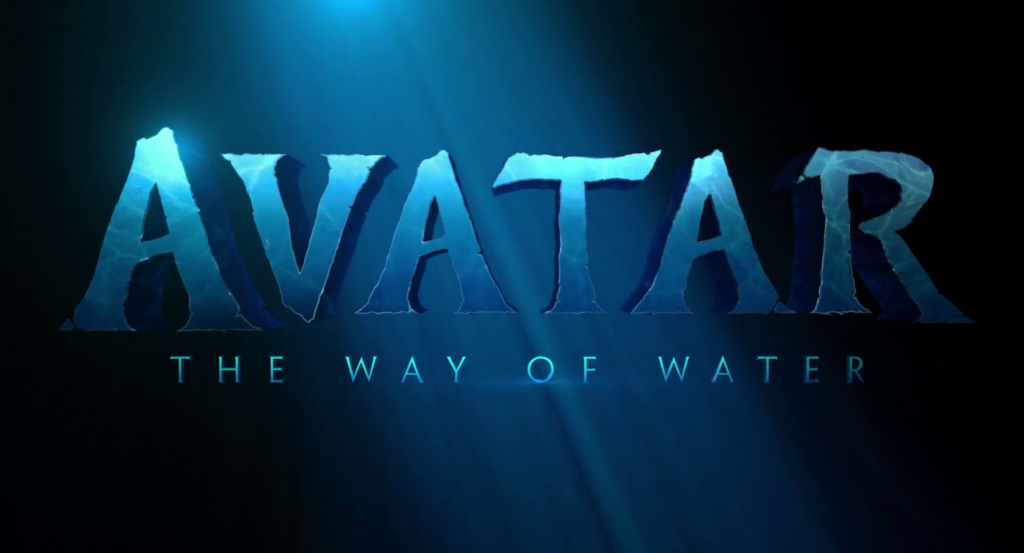
Avatar: The Way of Water (2022)
Film review #562
Director: James Cameron
SYNOPSIS: Humans have returned to the planet Pandora in an attempt to colonise the planet in the face of a dying earth. The native Na’vi race attempt to fight back, led by Jake Sully, but seeing that he and his family have become the target and putting their entire people at risk, Jake decides to leave with his family and find somewhere new to live. They find a tribe who live by the ocean who offer them sanctuary, and the family must learn their ways. However, Colonel Miles Quaritch, who was seemingly killed at the end of the previous film, backed up his memories and has been reborn into an avatar Na’vi, with the aim of getting revenge…
THOUGHTS/ANALYSIS: Avatar: The Way of Water is a 2022 film and a sequel to the 2009 film Avatar. In my review of Avatar, I made it quite clear that I had no love for any part of the film; I would easily put it in the top five of the worst films I have watched. So needless to say, I had very low expectations for this film, and my judgment is obviously biased on it from the outset. The story opens up with Jake Sully, the protagonist of the first film, narrating how after humans were forced to leave the planet by the native Na’Vi population, several years later, they just…come back because they feel like it, which seems to make the accomplishment of the first film seem somewhat worthless. Anyway, the humans pick up where they left off, and the Na’vi, led by Jake Sully, become guerrilla fighters disrupting the human expansion. Eventually, Jake becomes the target himself, and to keep the tribe and everyone safe, he relocates his family elsewhere, to seek sanctuary with another group of Na’vi. Well, that’s his logic anyway, but one: it seems obvious that he will be pursued wherever he goes. And two: the humans wouldn’t just stop their expansion just because Jake disappears. So anyway, Jake and his family come across the Metkayina, a tribe of Na’vi who live by the ocean, and ask for sanctuary there, which they are given. What follows is…basically the same plot from the first film: outsiders (Jake and his family) must learn the ways of the natives, and eventually end up leading them in the fight against invaders. When you boil the story down, it is just the exact same thing again, but in water (and even then, it’s whole philosophy about the ocean being the beginning and end of life etc. hardly gives you a new perspective on it). Fortunately, it is less of a “white saviour” affair where the outsiders come in and break all the rules and become their hero, but there’s definitely some of that still in there. It’s hardly uncommon for sequels to follow the same premise as their predecessors, but this film really needed to focus on worldbuilding and showing something new about the world the franchise is trying to create, and it just doesn’t. The majority of the plot is driven by a very simple setup repeated over and over again: the kids go wandering off where they shouldn’t, they get into trouble, and Jake and the adults have to bail them out. This happens again, and again, with each of Jake’s kids seemingly taking it in turn to go wandering into danger before being rescued. The film is accompanied by narration sparingly by Sully at random points, which gives the impression that the narration is only happening when the film can’t figure out a way to show what is going on itself.
The issue which compounds the issues of this film is that it runs over three hours long: the wafer-thin story is stretched well beyond it’s limit, and it doesn’t offer anything to justify this runtime. James Cameron defended the runtime by saying that people stream multiple episodes at a time, so a three-hour film is perfectly justifiable nowadays, but a film and TV series are different formats, and a film needs to be in some ways a standalone experience. This is not the film that is going to re-define cinema.
Sully is more or less the same person he was in the first film, but he’s also got a family now, so there’s all that added on top as well. Being the head of the resistance against the invading humans, he also treats his sons like his subordinates, having them address him as “sir.” This is not only a very typical father-son relationship we’ve seen before countless times, but also it doesn’t seem very natural: the humans arrived one year before the start of the film proper, so are we to assume that he treated his kids like this before the humans arrived, or he just became like this during the last twelve months of their lives? Other than that, Sully’s main role is to just rescue his kids after they get into danger, and to tell them off. Sully’s wife, Neytiri, is barely a character in this: from being the co-lead in the previous film who taught Sully the Na’vi way of life, here she barely does anything, and hardly has a character other than just being a Mother: she is an utter waste of a character: she has no story arc, no development, nothing. Their kids have somewhat of their own personalities, but they’re nothing special, and their character development goes nowhere. For example, when the family meet the new tribe, one of Sully’s sons, Lo’ak, clearly has an immediate attraction to one of the tribe members, as shown in the very typical slow-motion, bug-eyed cuts between the two, telegraphing very clearly what is going to happen. However, the film barely follows through on this, giving us one ambiguous scene with them. The film does this quite a lot: establishing that a very typical story arc is about to happen, but just leaving it half-finished, so you get the worst of both worlds: a predictable storyline telegraphed a mile off, but also never actually doing what it sets out to do. Another of Sully’s children, Kiri, who is actually Grace’s avatar’s child from the first film, is set up to have some sort of connection with the planet’s life force or something, but the film never does anything with it, and in the film’s finale it lets her save the family or something by letting her control some little creatures or something…it is just completely unexplained or unexplored, and not even in a purposely ambiguous way: the way it is revealed in the finale just feels like a cop-out to the danger set up there.
One of the most incomprehensible decisions the film makes for me is to bring back Colonel Miles Quaritch, the antagonist of the first film. For reference, he was the stereotypically cartoonish character in the first film: a Texan military veteran who acts like everything is a battle, and turns the planet into a warzone so he can reap its resources (the obviously named “unobtanium”). When he died at the end of the first film, it completed his arc, and also gave the opportunity to give the film a new villain, something more complex and interesting. But no: they just bring him back by having a “back up” of his memories etc. uploaded into an avatar, repeating the same premise as the first film. There is an attempt to try to develop his character: by making his grudge against Sully the main focus, and him, as an avatar, try to adapt to using his new body on the planet more effectively. But this is also developed poorly, and doesn’t really add anything to his character, and he’s still just the very typical, cartoon-ish villain he always was. Even giving him a son to try and form a bond with is just ill-conceived and all over the place. The film also again cops out of killing him at the end, and apparently he will remain as the main antagonist through the other sequels. It just seems like a missed opportunity to bring back one of the most unoriginal characters from the first film whose story was resolved instead of trying to do something new. The rest of the humans are also fairly boring and one-dimensional: General Frances Ardmore is in charge of the new human expansion, as apparently earth is now dying, and they want to colonise Pandora (it is never explained further than this). After the first hour, her character disappears and is never seen again. The “whaling” captain is also just another typical villain without much interesting going on. The whole “hunting” arc is also very overblown, with a very long scene explaining in detail how the humans hunt the whale-like creatures, and the film just stops for a good ten minutes while it explains how these imaginary creatures are hunted for no reason. Obviously it’s meant to be a mirror for how whales are actually hunted, but this repeats the problem of the first film of being very literal with its metaphors: where giant bulldozers knocked down giant trees as a not-so-subtle reference to environmental destruction. It turns out that the whale-like creatures are hunted for a little bit of brain matter that apparently stops human aging. Sounds interesting, but is never elaborated or referenced again. I get that the film is not about humans or the state of human society, but driving the plot with the Earth dying and actual immortality could really do with a bit more elaboration.
Released thirteen years after the original film, The Way of Water had a lot of time to get things right, and also had to develop a new manner of filmmaking to capture the underwater performances. The visuals look decent for the most part, but there’s hardly anything original or interesting that made me think “Wow, that’s new and exciting.” the setting is obviously inspired by South-east Asia and Oceania, but it doesn’t really build something new with that inspiration. The animation is smooth for the most part, but during the more fast-paced scenes, the movements do look a bit off. Also in these scenes, the focus between the background and foreground characters is quite disjointed, and takes the characters out of their setting a little. Either way, the visuals and effects really aren’t of any interest to me as a movie-watcher: maybe if they have a distinctive aesthetic or style they are trying to develop, but this film doesn’t: as mentioned, it doesn’t build anything new on top of it’s real-world inspirations.
Overall, in case you couldn’t guess, Avatar: The Way of Water does little, for me, to improve or innovate on its predecessor. The story is threadbare and relies on the same set up of the kids getting into trouble and Jake having to rescue them over and over, alongside recycling the basic premise of the first film, just with water instead of a forest. The characters are pretty dull, including resurrecting one of the most bland characters in the antagonist, to relegating one of the main characters to nothing with Neytiri. All of this is made worse by an excessive runtime of three hours that I cannot see as justified. Maybe if you’re a fan of the first one, you’ll like this too, as it does continue the story, and gives you more of the same, perhaps too much, by resurrecting characters that didn’t need to come back. Otherwise, I have to put this on the same level of it’s predecessor as an uninspiring, long-winded, and unoriginal affair that generates no interest, vision or entertainment for me as a viewer.
-
#561 – Riders to the Stars (1954)
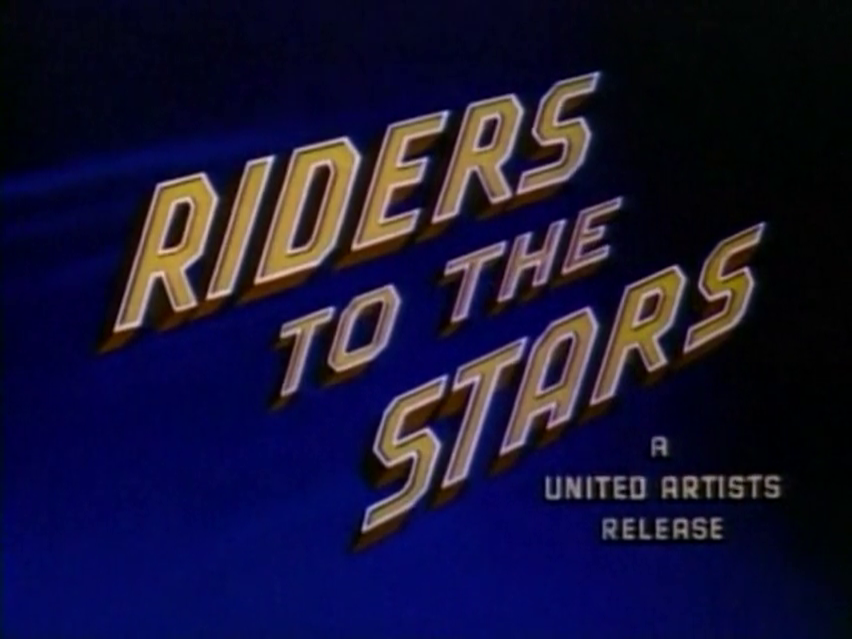
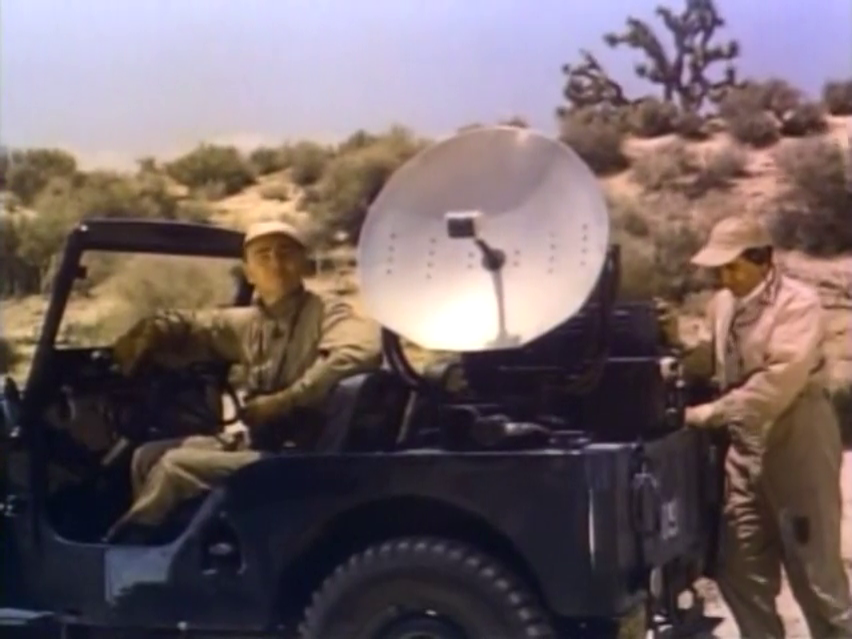
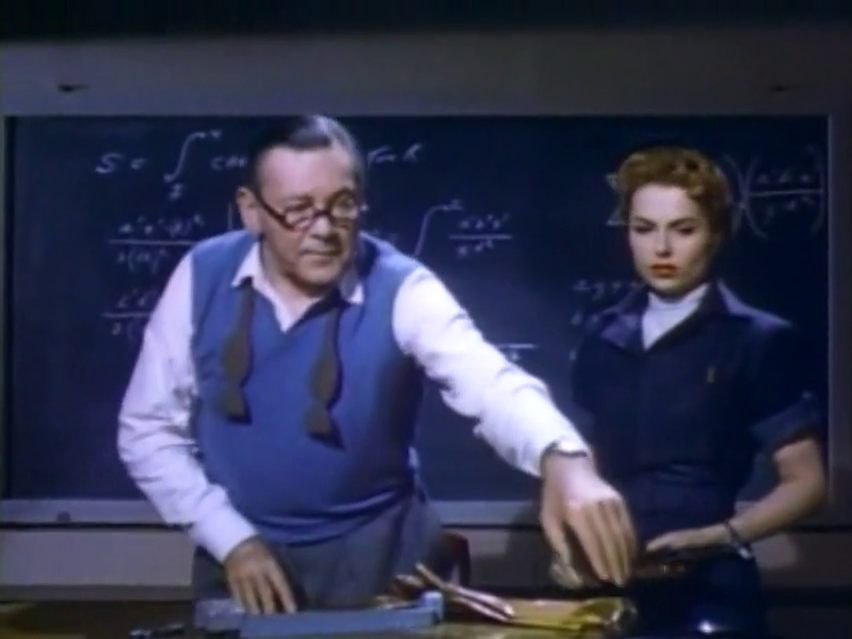
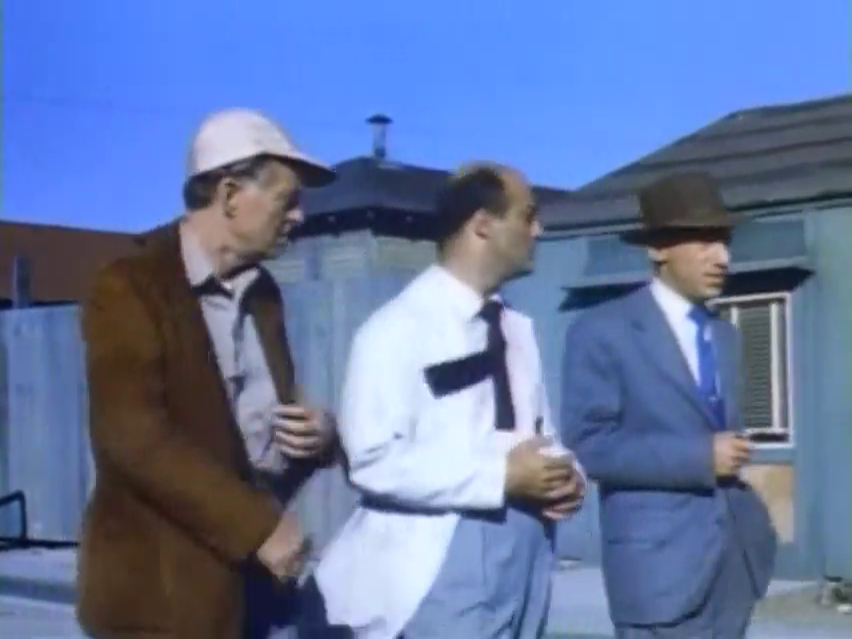
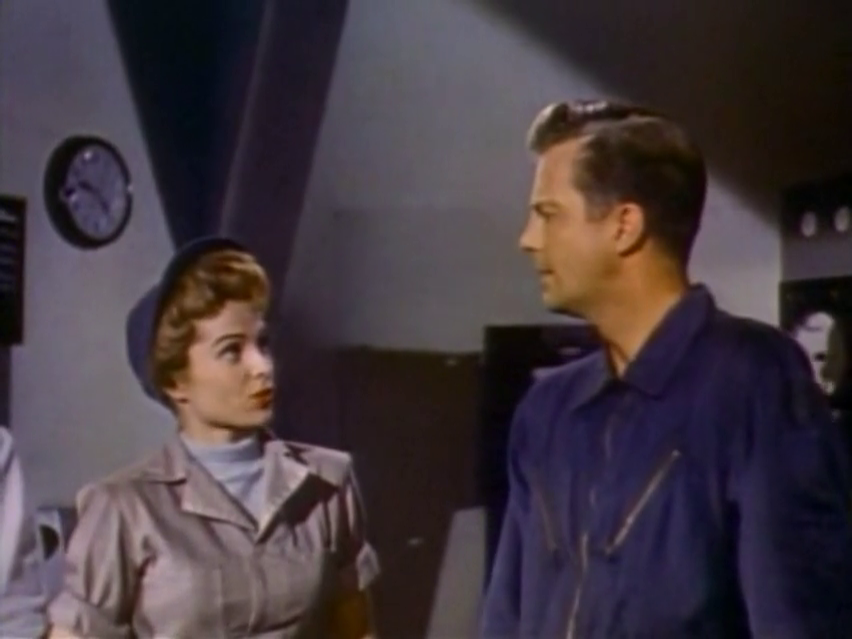
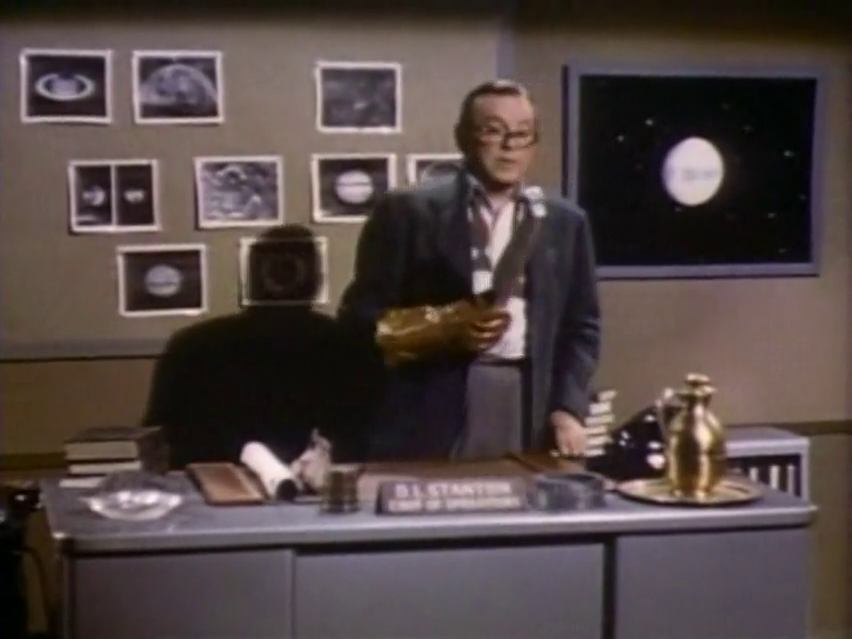
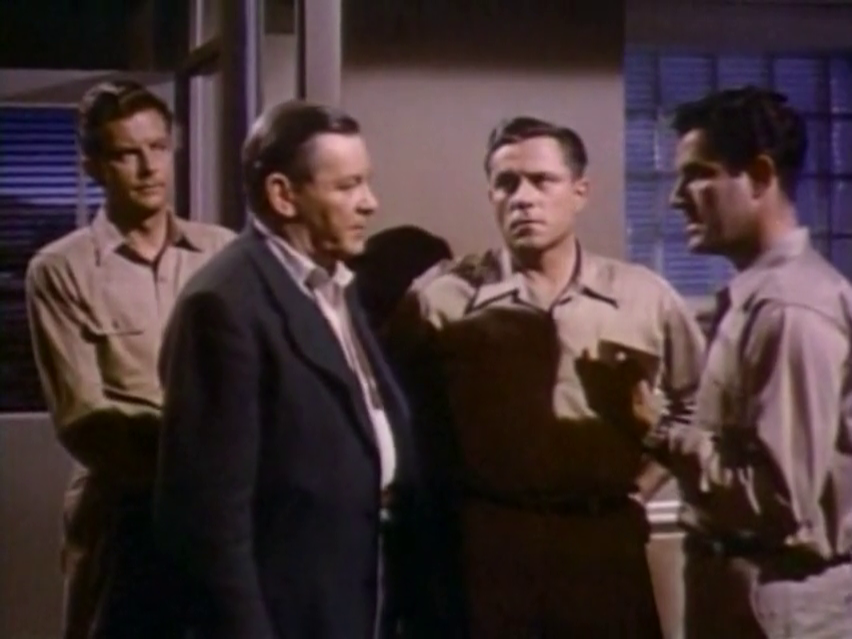
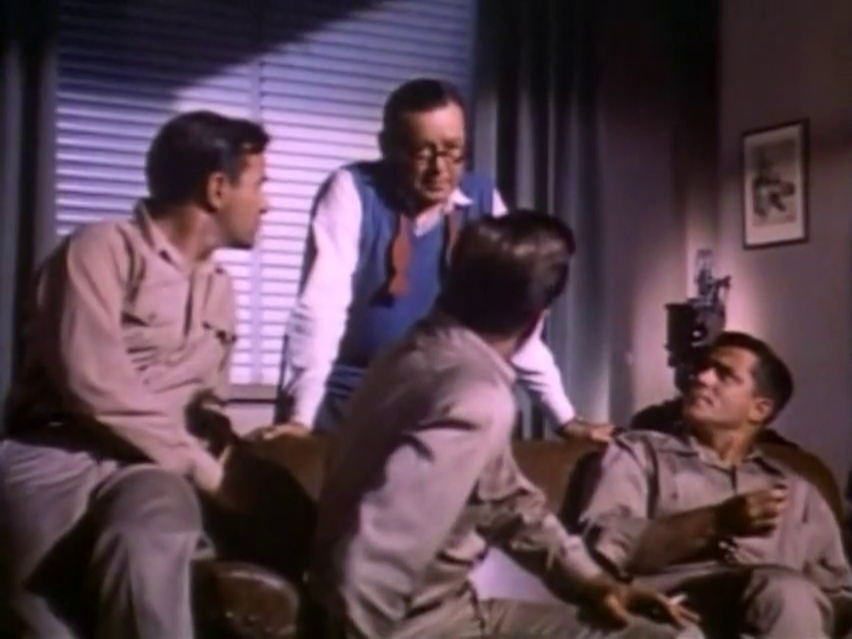
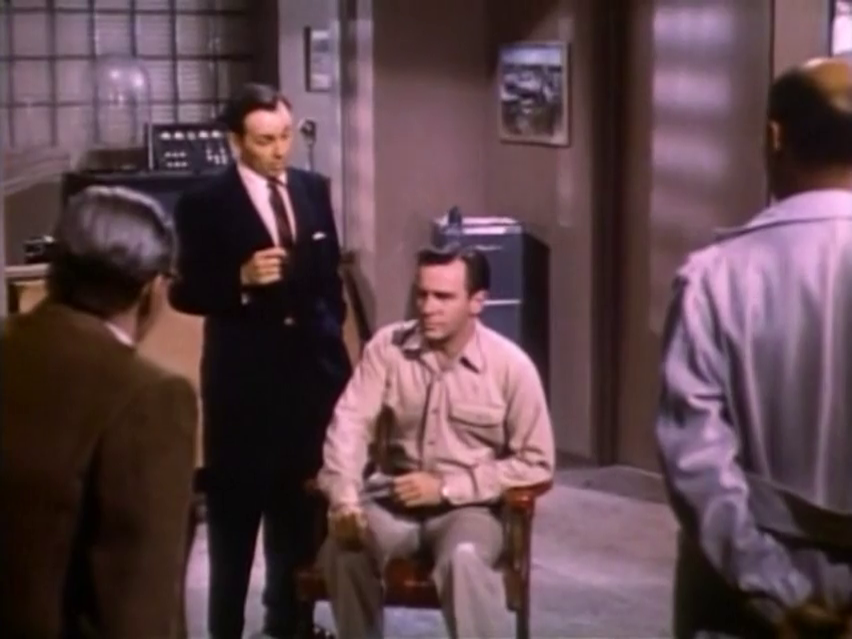
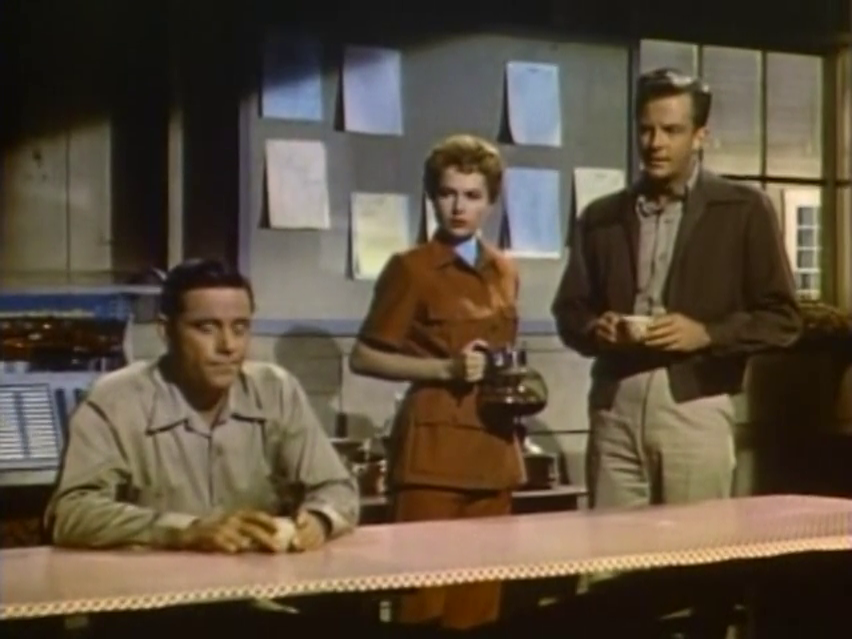
Riders to the Stars (1954)
Film review #561
Director: Richard Carlson, Herbert L. Strock
SYNOPSIS: A group of twelve men highly specialised in various fields are recruited for a top secret project. They undergo various physical and psychological tests until only four remain and they learn the secret of the project: to travel into space and collect a meteorite to discover how they exist in space despite being bombarded by cosmic radiation…
THOUGHTS/ANALYSIS: Riders to the Stars is a 1954 independent sci-fi film. The film’s story centres around twelve men, including Dr. Richard Stanton, who are highly trained experts in their field, all invited to a secret project, where they are put through a series of physical and psychological tests to determine their suitability for the project. When only four remain at the end, including Stanton, they are told the purpose of the project: they are to go into space to collect a meteorite, to see how they survive in space despite the large amount of cosmic radiation, which destroys man-made material. The story mostly revolves around these twelve men undergoing the various tests associated with space travel, including zero-G training. The film has quite a lot of detail and there’s obviously some knowledge and consideration about what would actually be required for a human to go into space, even though in 1954, no one would have done so, so it is a bit speculative. The trouble with all of this is that the film is that everything is so boring, and it doesn’t really bring the science or danger alive thanks to dull characters and long-winded exposition. There’s some discussion about how they need to go into space before their enemies (Soviets, presumably) so they can “keep space free,” but one of the men points out that position is no better than their enemies from conquering space, so the film does have a bit more depth than simple U.S. propaganda in the “space race,” but again, this often gets forgotten over the low energy of the overall plot and progression.
The cast of characters don’t really stand out from one another: the twelve candidates are all middle-aged men with short dark hair that are barely distinguishable from one another. There is, of course, one solitary female character in the main cast, but she is an actual scientist herself (with the “Dr.” title too), which is very rare. Unfortunately, her role devolves into being just a typical romantic interest for the male lead, which is disappointing. The finale of the film does have a bit more energy, as the three rockets head into space to try and collect meteorites, and Stanton being the only one who survives at the end. The cast learn that meteorites survive cosmic radiation by having a thin layer of carbon surrounding them (like diamond), and so presumably they can build satellites and space stations now thanks to this information. Obviously this isn’t really what happens in space, but again since nobody had been to outer space at that point, it probably seemed more believable at the time it was released.
Despite being an independently produced film, Riders to the Stars has a fairly good look and feel to it: the sets are detailed, including a Zero-G testing machine for the candidates, the attention to detail on the science is pretty good, but as mentioned, it does result in long scenes of people explaining things without being able to translate that knowledge into something interesting to watch. Also of note is that the film was filmed and released in colour, which most of these cheaper films of the time were not. A lot of stock footage is also used near the end of the film, including mice in a Zero-G environment, and some of the first footage taken of the Earth from space, but again, it doesn’t really accomplish much in the context of the film. Overall, Riders to the Stars has a decent amount of effort put into it’s production, and is obviously well-researched into what it would take for people to go into space, but the problem with this is that the film is often just dull exposition and dialogue, rarely able to bring the ideas and knowledge it is grasping with to life. Perhaps interesting at the time of release to show viewers how space travel would actually work, nowadays it is wholly unremarkable.
-
#560 – PK (2014)
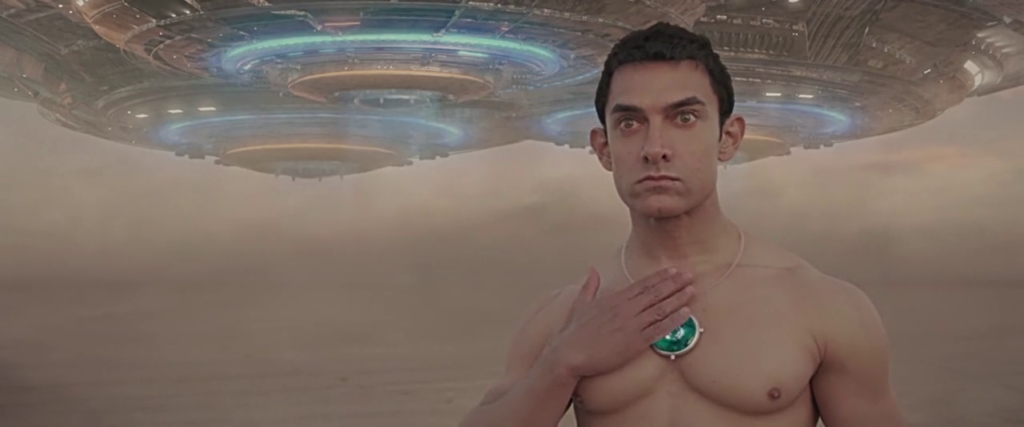

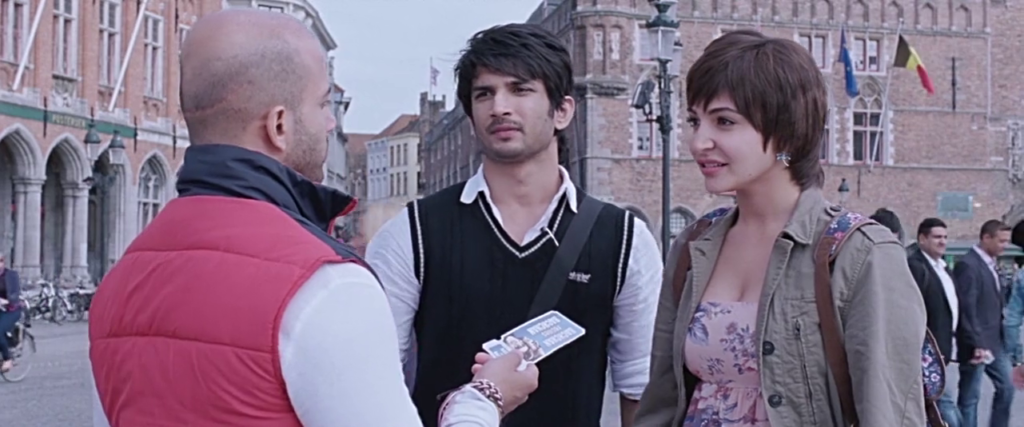
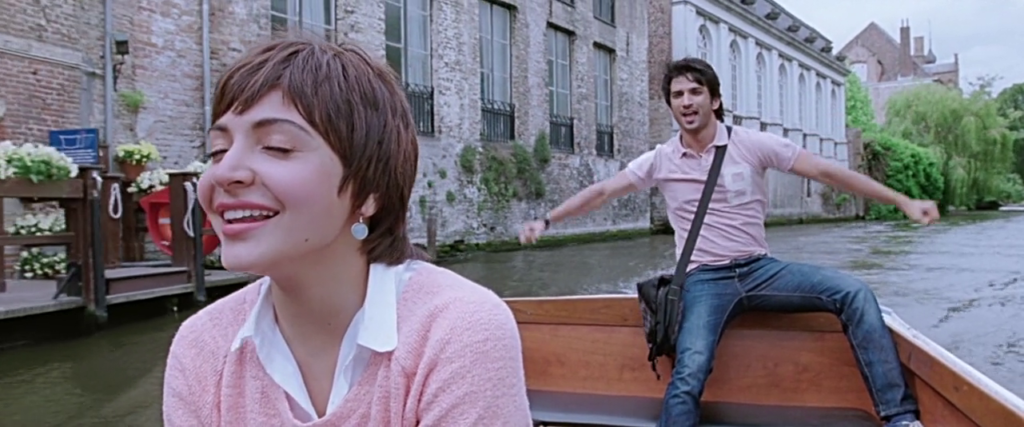
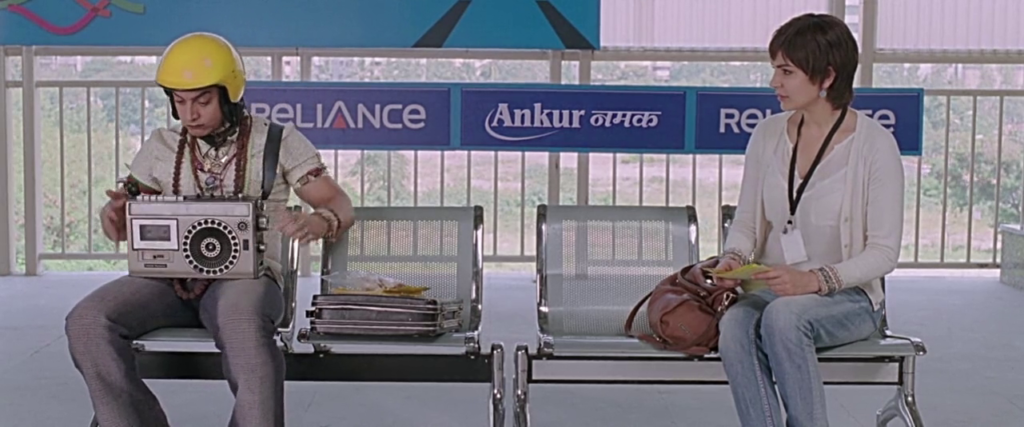

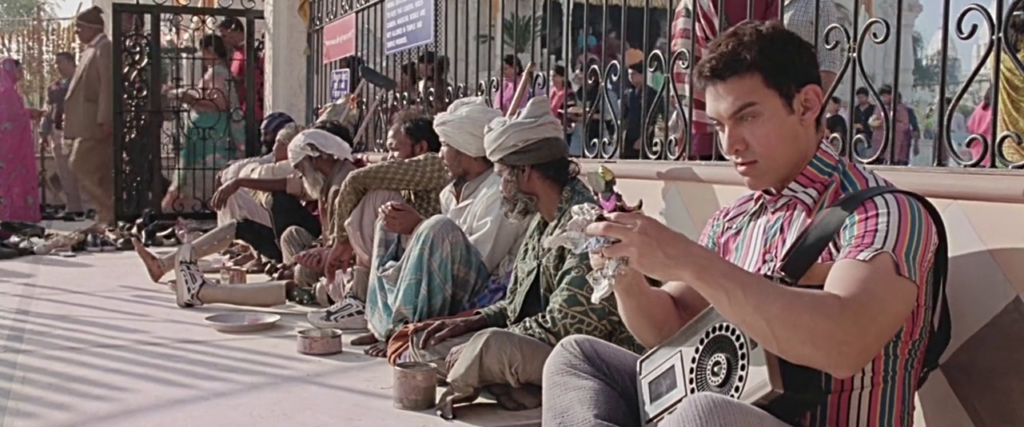
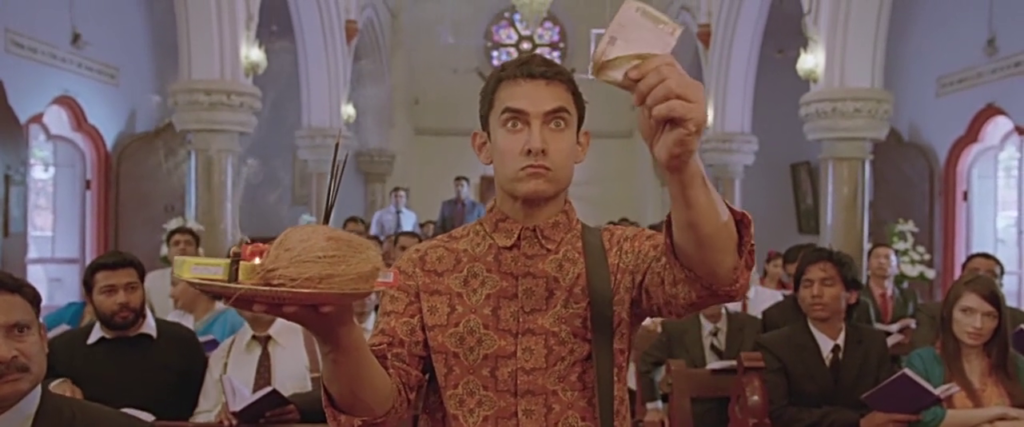
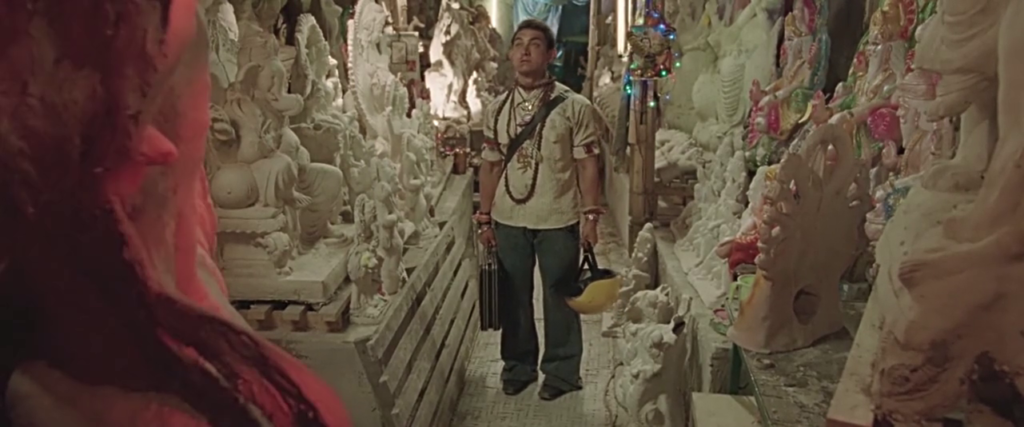
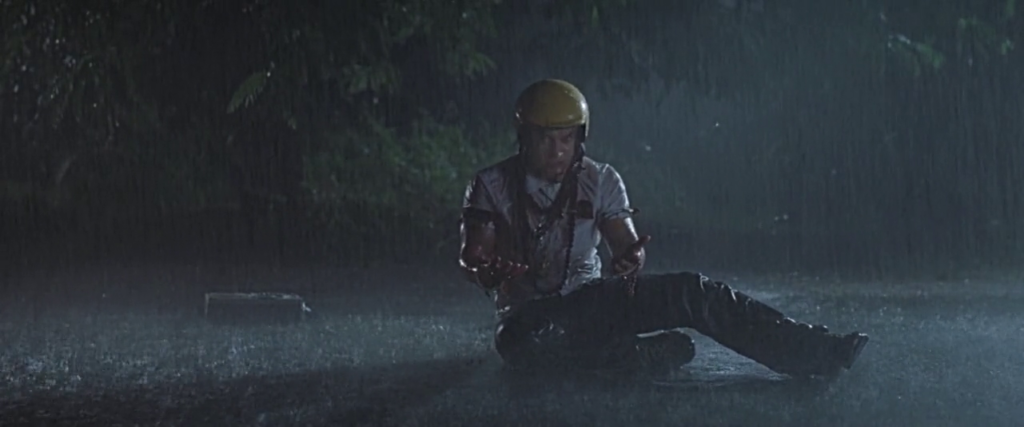
PK (2014)
Film review #560
Director: Rajkumar Hirani
SYNOPSIS: An alien arrives on Earth, and has his communicator with his spaceship stolen. Now stranded on the planet, he attempts to learn how to survive and learn the ways of the people here, but he is especially confused by the concept of religion. He meets Jaggu, a reporter who is looking for her next big story. She is intrigued by his naivety and how his simple questions challenge the conflicts between different religions, and how those that profess to know what God wants are the ones who know least about religion. Jaggu and PK show down with Tapaswi, a religious leader who has come into possession of PK’s communicator, claiming to be a religious artefact, and the pair try to expose him and get PK’s communicator back to he can return home…
THOUGHTS/ANALYSIS: PK is a 2014 Indian sci-fi film. The story primarily revolves around PK, an alien who, in the film’s opening, lands on Earth, and shortly after has his communicator with his spaceship stolen, meaning he has no way to get back home. Attempting to adjust to life on Earth, he turns to God for help, but is perpetually confused by all of the different religions and their rules. He eventually encounters Jaggu, a reporter who is looking out for a worthwhile story, and becomes interested by PK’s naïve take on the world, and how it provides genuine insight on the world from a fresh perspective. Opting to tackle the absolute minefield that is differences and conflicts between religions, PK from the outset sets itself a dangerous task, but the comedic aspect of the film never strays into being offensive or controversial, focusing on what the religions have in common, rather than their confrontations. This might seem to be a bit simplistic, but this is one of the film’s greatest strengths; it manoeuvres through it’s subject in such an expert manner that it creates an entertaining experience full of life. On top of this, the dialogue and performances are precise and genuine, and again, are professionally executed.
The film is essentially divided into two halves: the first half deals with the more comedic aspects and a very “fish out of water” situation surrounding PK being stranded on Earth. The second half switches to a more drama and serious tone, with PK trying to expose the religious preacher Tapaswi, and get back his communicator that Tapaswi is claiming to be a religious icon to his followers. Again, when the film gets serious, it still maintains it’s expert exploration of it’s subject: avoiding being controversial, but still making a significant statement and creating some intense emotional moments. Even though the film is almost split down the middle, the change of tone doesn’t feel artificial, and feels like it moves on just when it needs to. If I were to find a fault in the plot, I would say the forced romance element that shows up at the final part of the film and about “letting go” just didn’t really need to be there, but even then, it is handled so well in terms of dialogue and acting, and producing a emotional reaction that it doesn’t really matter that it wasn’t really necessary, because it still produces something worthwhile.
The cast work so well in their roles, and although they are roles you are probably familiar with, such as PK being a clueless alien adjusting to life on Earth, they are still brought to life vibrantly, as mentioned, through stellar acting and sharp dialogue, and in the end it feels like you come out of it with a well rounded experience that never hits a lull. Despite having a few bumps in the story with a few elements that it could have done without, I think it is necessary to give PK high praise as a film: it is lots of fun, but also very heartfelt, alongside making a powerful statement without being mired in controversy. The film deserves the praise it received, and in particular, the absolutely solid script and dialogue, enhanced further with a host of strong performances. Not quite perfect, but deserving of it’s huge success.
-
#559 – The Magnetic Monster (1953)
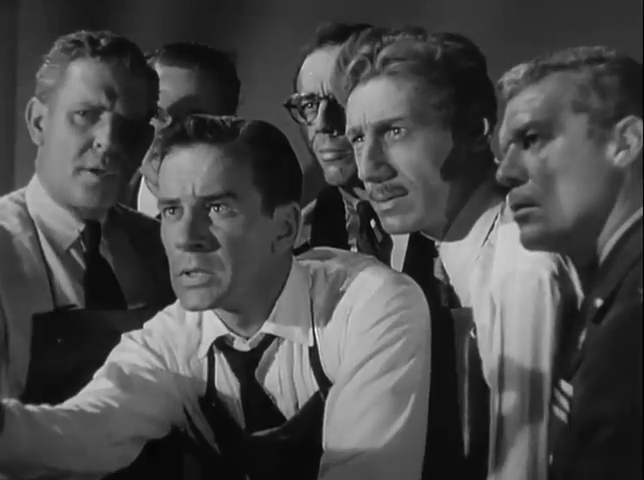
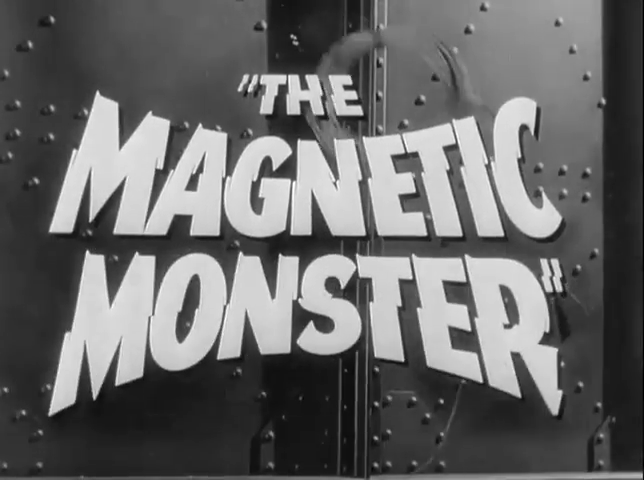
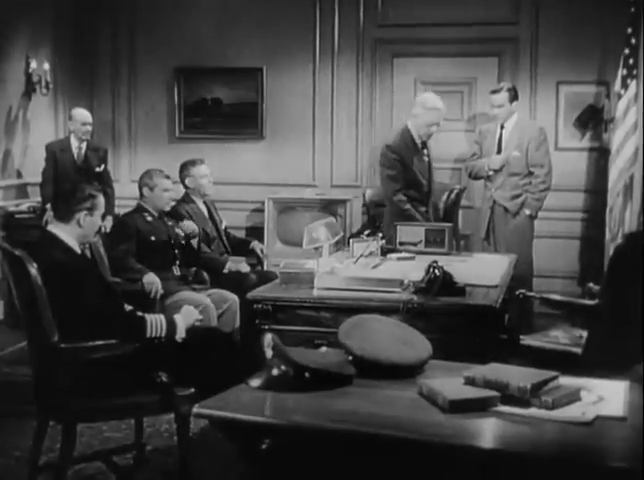
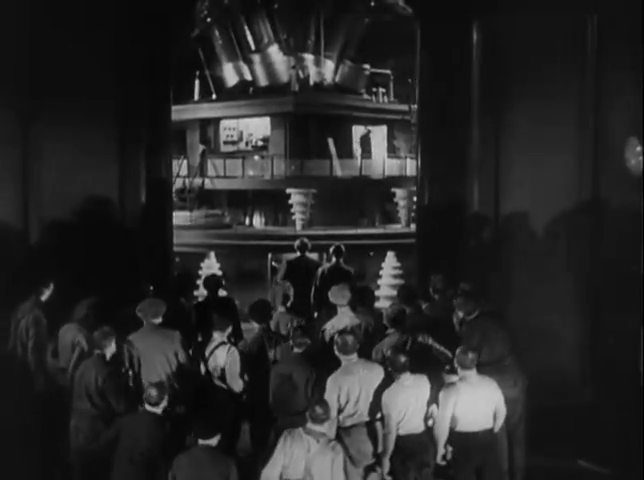
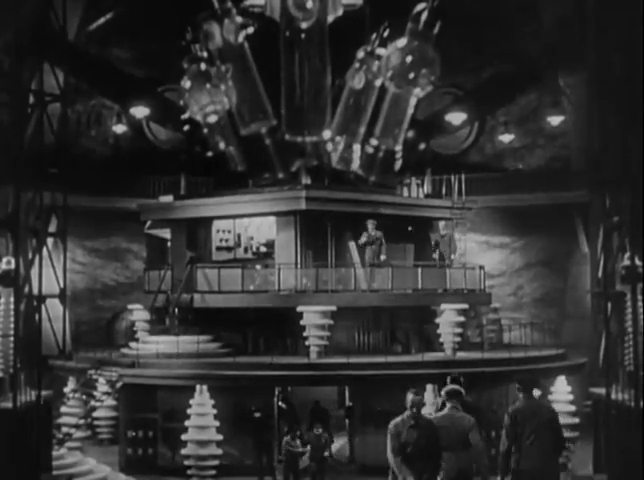
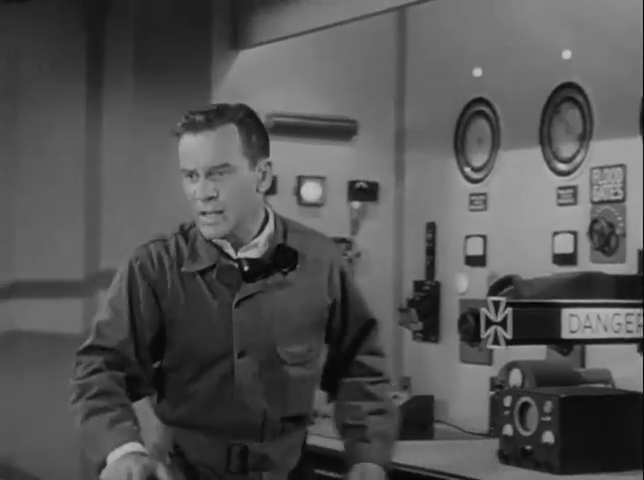
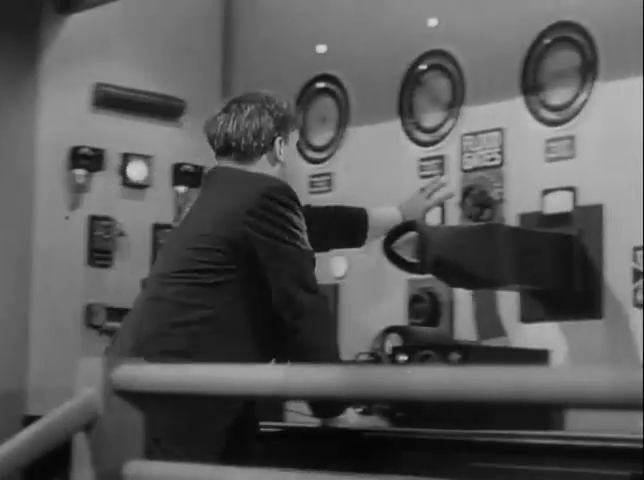
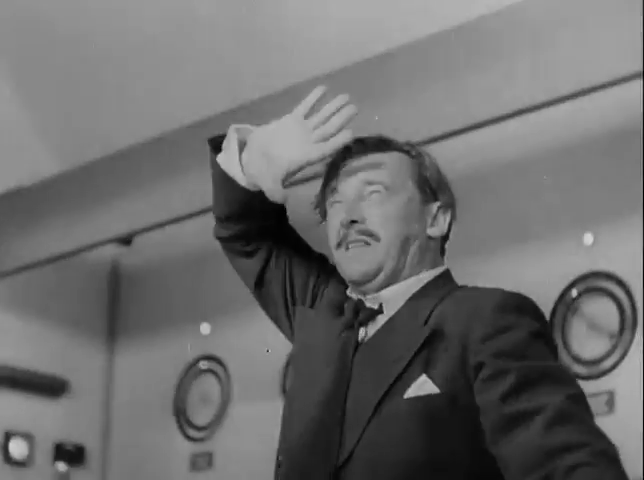
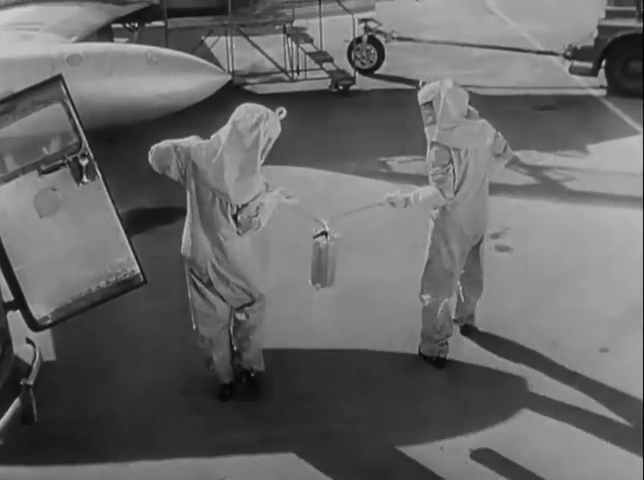
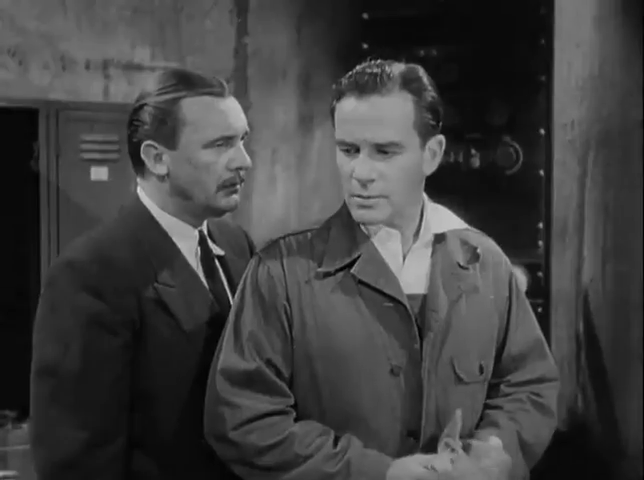
The Magnetic Monster (1953)
Film review #559
Directors: Curt Siodmak, Herbert L. Strock
SYNOPSIS: The Office of Science Investigation (OSI), made to deal with new threats in the atomic age, send their agents, led by Jeffrey Stewart, to investigate a case of strange, powerful magnetism. It turns out that the incident is caused by the research of a scientist who has created a new element that is feeding off energy, and threatens all life on Earth…
THOUGHTS/ANALYSIS: The Magnetic Monster is a 1953 science-fiction film. In the opening, we get a monologue about the threats faced in the new atomic age, and in response to this, the Office of Scientific Investigations (OSI) is established to counter this new threat. One of their A-men, (atomic-men) agents, named Jeffrey Stewart, is called to investigate a strange case involving items becoming magnetised, and stumbles upon some dangerous research and a new element that could threaten to destroy the earth. The film has a very serious tone to it: the narration by the main character is very dramatic and dry, and reminds me more of what you would find in a crime-noir film. The plot itself is decently structured, with some mystery that unfolds at an even pace. The narration helps explains the story, but perhaps overdoes it by relying on it too much rather than showing the story.
At a time of cheap b-movies which were cheap looking that leads them to not being taken seriously, The Magnetic Monster does put some effort into treating the new era of atomic warfare seriously, which presented science almost as if it was exclusively a weapon of war. As mentioned, the narration gives the film a very serious tone, and there’s not much light-heartedness or humour to supplement it. There’s also not really that much action: the “Magnetic Monster” is just some sort of…radioactive element that can only be seen through a microscope, so it limits how much of a threat it can be perceived it to be, but the effects it makes look quite nice. The characters are all fairly bland and similar: just middle-aged men in uniforms talking or arguing with each other, with a grand total of one female character, who’s only role is as Jeff’s wife.
Despite being an independently produced film, there’s some good points about the production: there’s a variety of sets and locations, and they’re fairly detailed so you get a sense of the different locations. The huge machine at the end of the film is quite impressive, but the footage of it is taken from the 1934 German film Gold, and the finale of The Magnetic Monster essentially revolves around the use of the footage from Gold, taking place in an underwater facility that provides the climax for a series of explosions. The Magnetic Monster feels like something a bit different from the usual 50′s sci-fi b-movie. It takes the spirit of the time seriously and delivers a sombre and straight story without any cheesy monsters of special effects. the downside to this is that it’s not that entertaining, and a lack of action and energy might this film difficult to concentrate on through it’s runtime.
-
#558 – Return of Mr. Superman (1960)
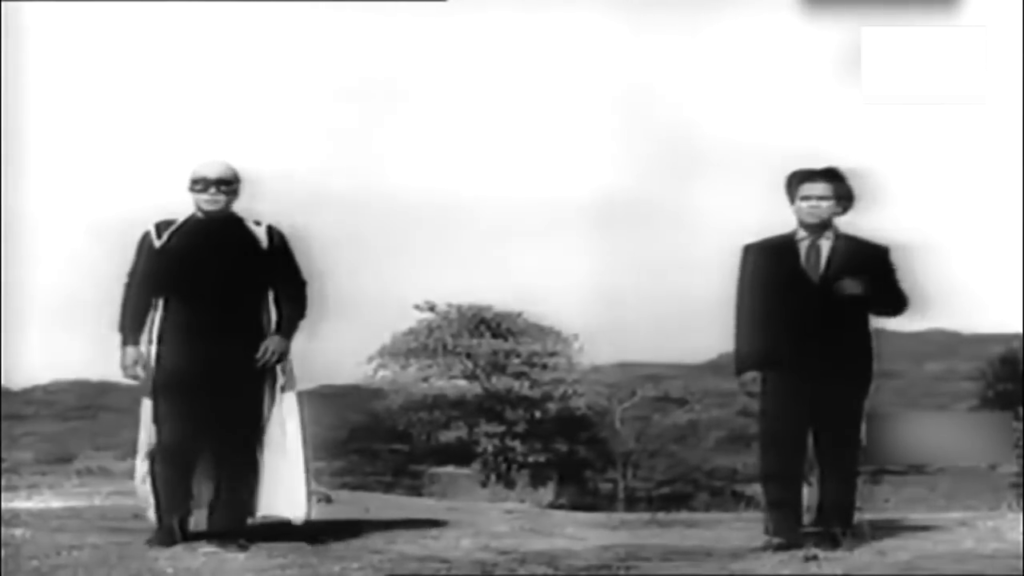
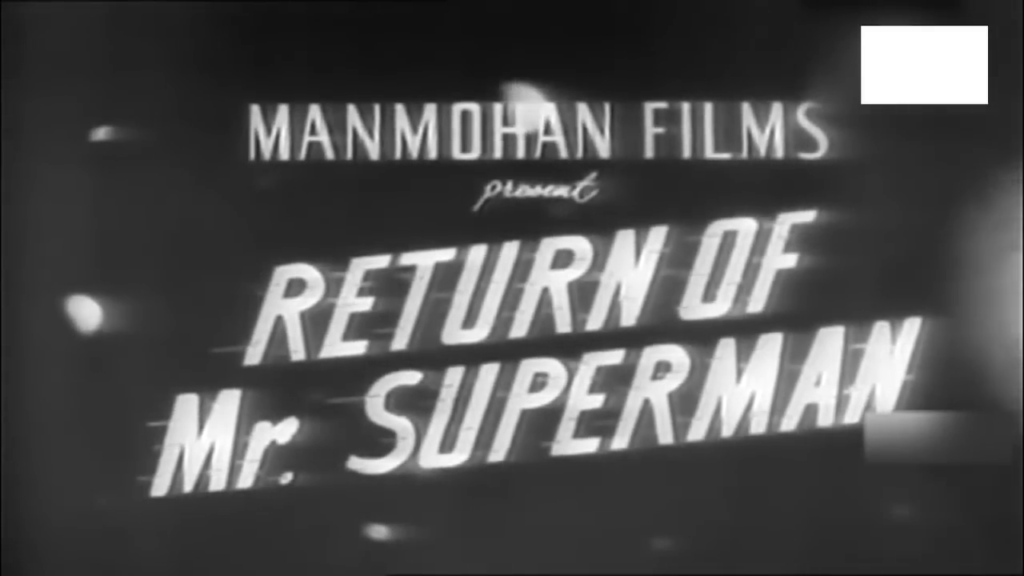
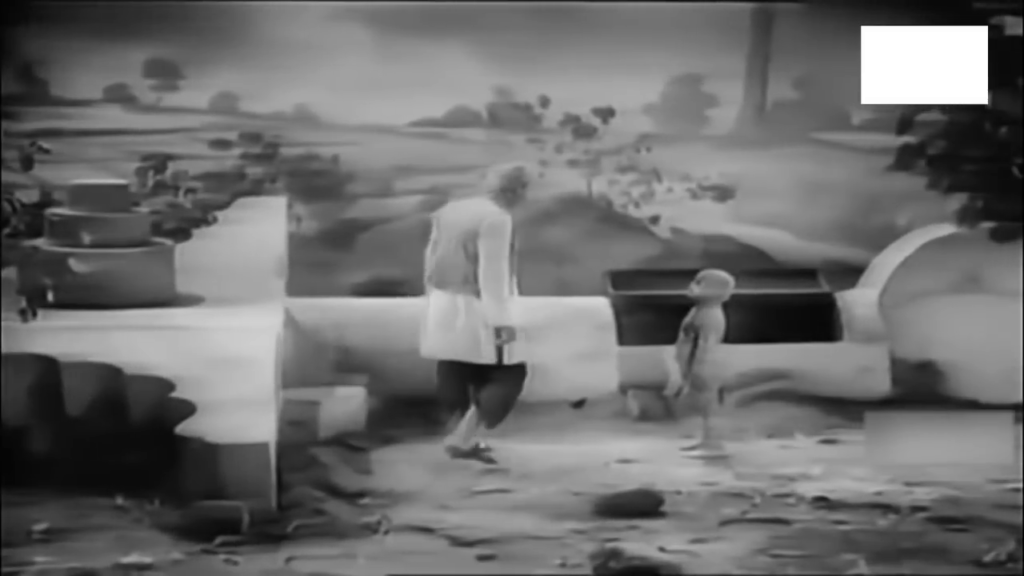
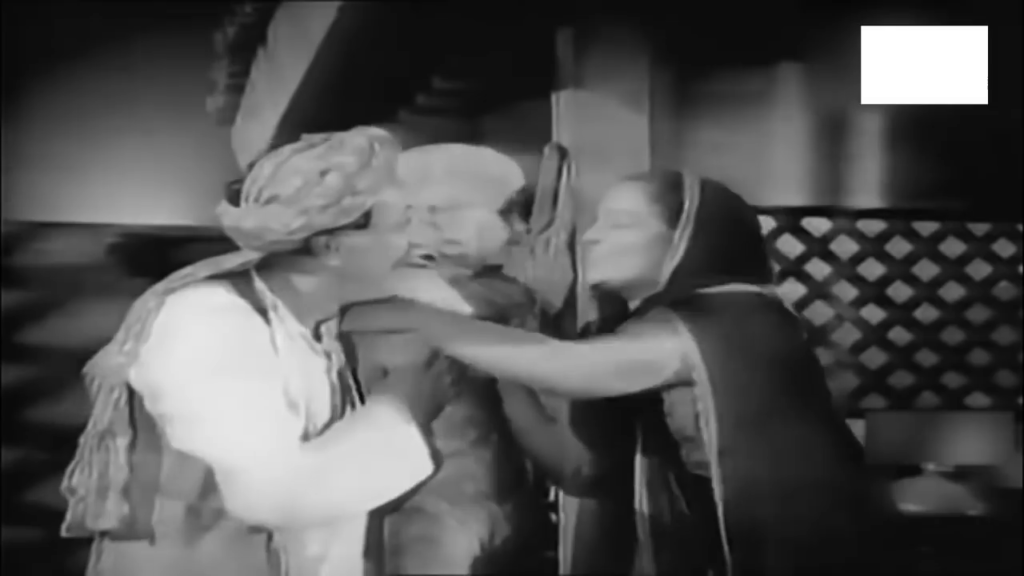
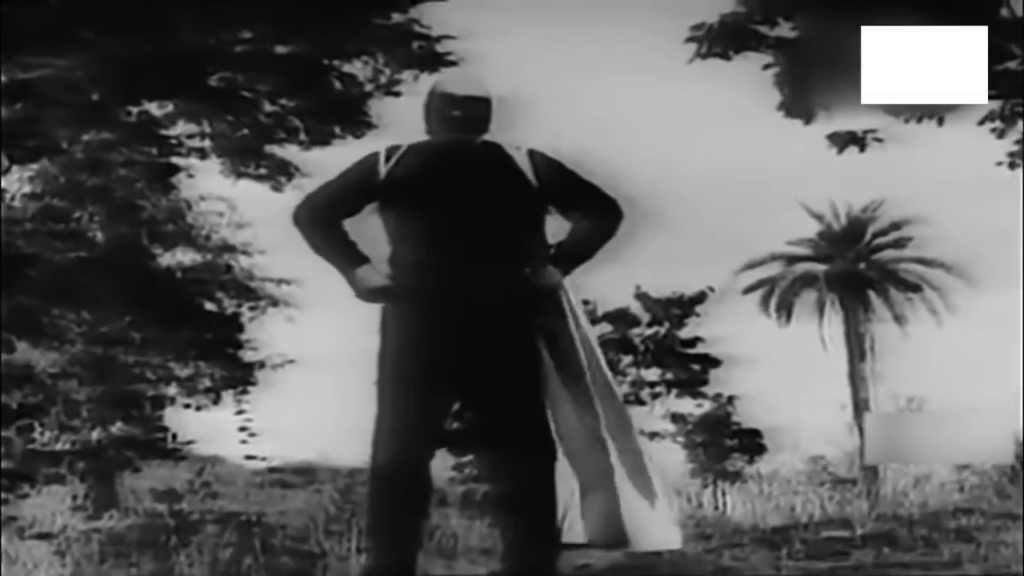
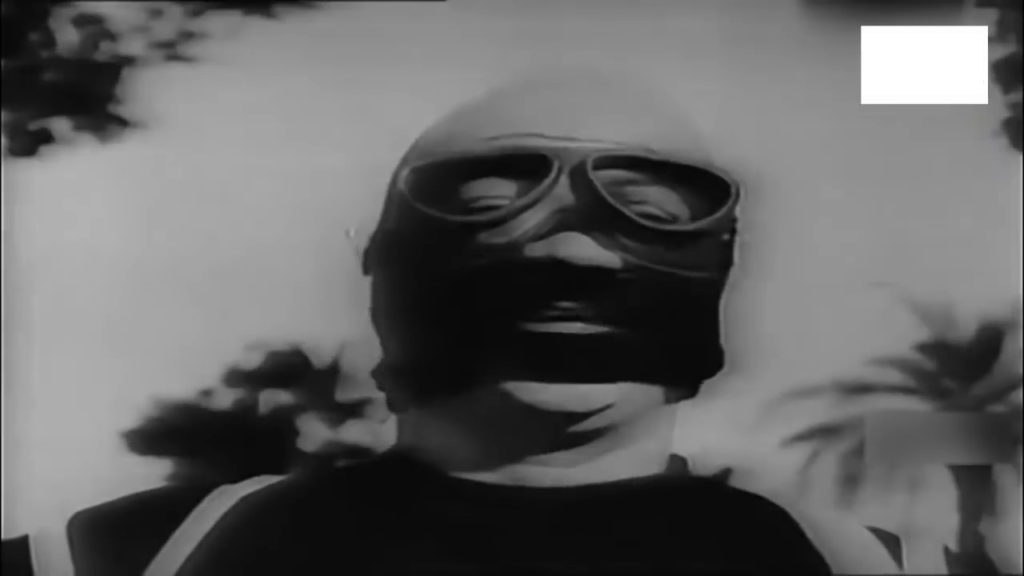
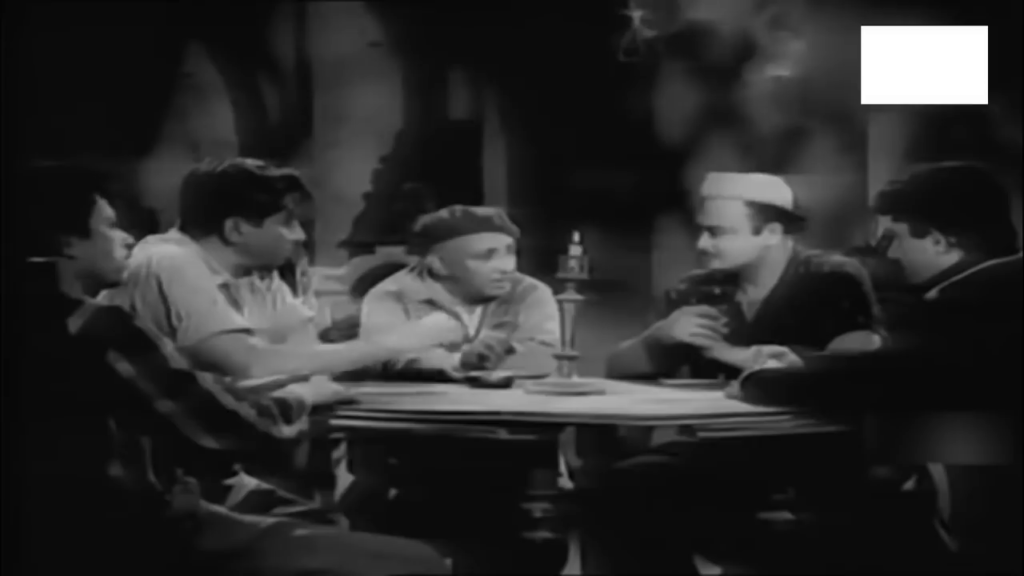
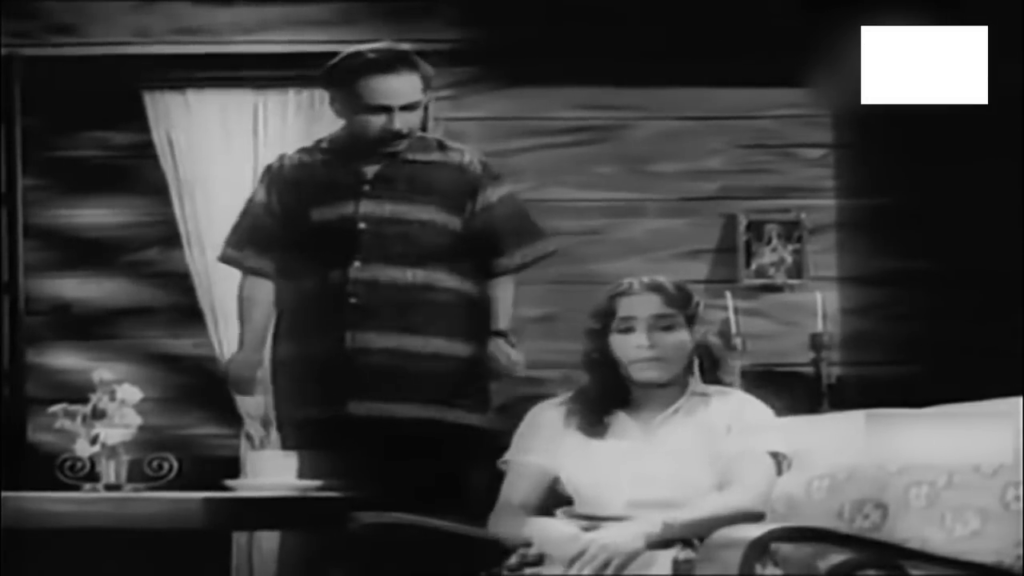
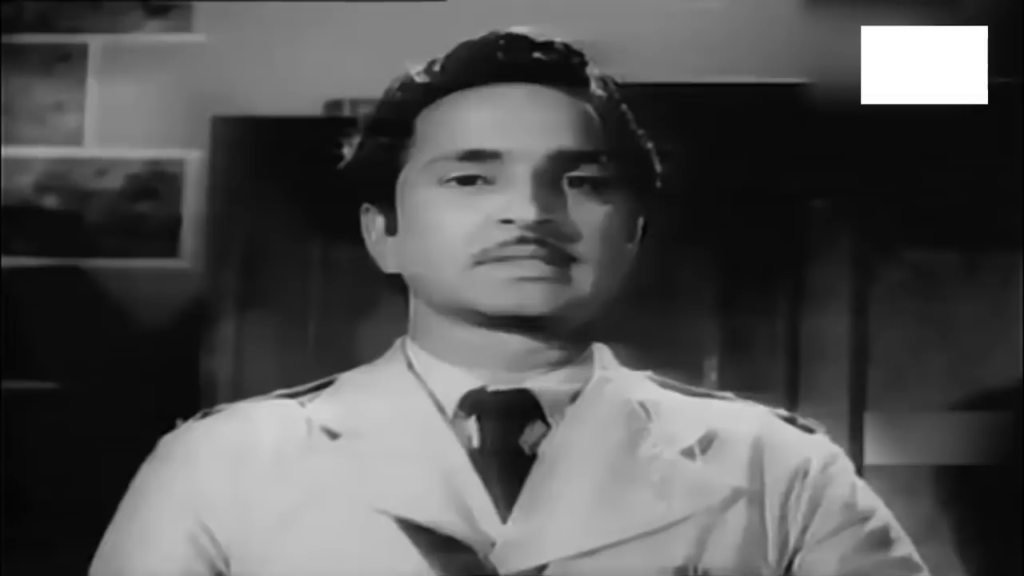
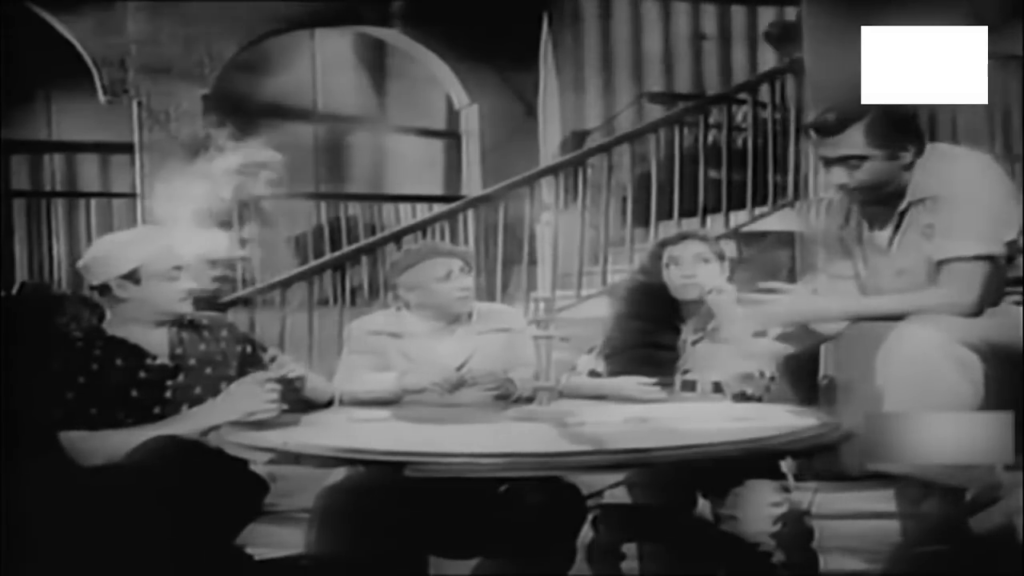
Return of Mr. Superman (1960)
Film review #558
Director: Sabir Manmohan
SYNOPSIS: A child from the doomed planet Krypton is sent to Earth as the last of their kind, and lands in rural India. A farmer finds the ship and the child inside, and takes them back to his wife, where they raise the child themselves. They realise that the child possesses super powers, but keep it a secret. As an adult, he moves to Bombay to work as a newspaper reporter, and also stopping criminals in his secret identity as Superman. However, when an imposter starts committing crimes dressed as the Superhero, Superman becomes wanted by the law, and must fight to clear his name…
THOUGHTS/ANALYSIS: Return of Mr. Superman is a 1960 Indian film and an unlicensed adaptation of the Superman character. The film starts out like every version of the Superman origin story, with Superman as a child being loaded onto a spaceship on the doomed planet Krypton, and sent to Earth to escape the planet’s inevitable destruction. The ship lands in rural India, where a farmer discovers the child and takes him back to his wife, and the two agree to raise him together. They learn that the child possesses extraordinary powers, including beating other children at wrestling, and finding a buried treasure (presumably via his x-ray vision or something). When the boy, now named Jairaj, grows up, he moves to Bombay to work at a newspaper, and starts to lead a double life; fighting criminals as “Superman,” and alerting the police to criminal activity. The story in this respect follows the origin story of Superman reasonably accurately (apart from the ship landing in rural India instead of the rural U.S.), and it has everything it needs to be a Superman story, even if it is unlicensed.
The main plot of the film revolves around a criminal smuggling gang hatching a plan to get revenge on Superman by having an imposter commit crimes dressed as him to turn the police against him. It’s really not an original plot, and one definitely not suited for Superman: how do you imitate someone with superpowers? The plot is a little all over the place, and doesn’t really go anywhere beyond where you would expect it to. The characters are all pretty bland, including the Lois Lane replacement, the comic relief of Johnny (probably meant to be the Jimmy Olsen character), and the criminal gang who serve as the villains not really having much to do with anything. Superman barely even does anything anyway: he usually just calls up the police inspector to report crimes. I don’t know if there is a limit to how much a film at the time could show someone being a vigilante rather than just calling the authorities (The U.S. film serials abandoned the “vigilante” role as someone who works outside the law around the time of the second world war), but either way, it makes the film really boring when you’re expecting Superman to do something and he picks up a telephone.
Speaking of Superman, the most notable thing about this film is probably his costume: forget everything you think you know about Superman’s iconic outfit, this one is clearly cobbled together with whatever the filmmakers could find lying around: driving goggles and leather helmet, complimented by a towel wrapped around his neck to serve as a cape of sorts. It looks like there was no thought given to the costume’s design, but thankfully you don’t see it very often. The film has the typical musical numbers you expect in Indian cinema, but the first one doesn’t show up until over thirty minutes in the film, but then they become constant. The songs also lack the usual dancing and choreography, so they’re not very interesting. This is the third Indian Superman film I’ve watched (the others were released in 1980 and 1987), and it’s easily the worst, although the others aren’t exactly great. The plot is all over the place and fails to provide anything unique or interesting. The costumes and production lack any kind of consideration, and the characters are barely established, leading to a dull and incomprehensible mess.
-
#557 – Mighty Morphin Power Rangers: Now and Always
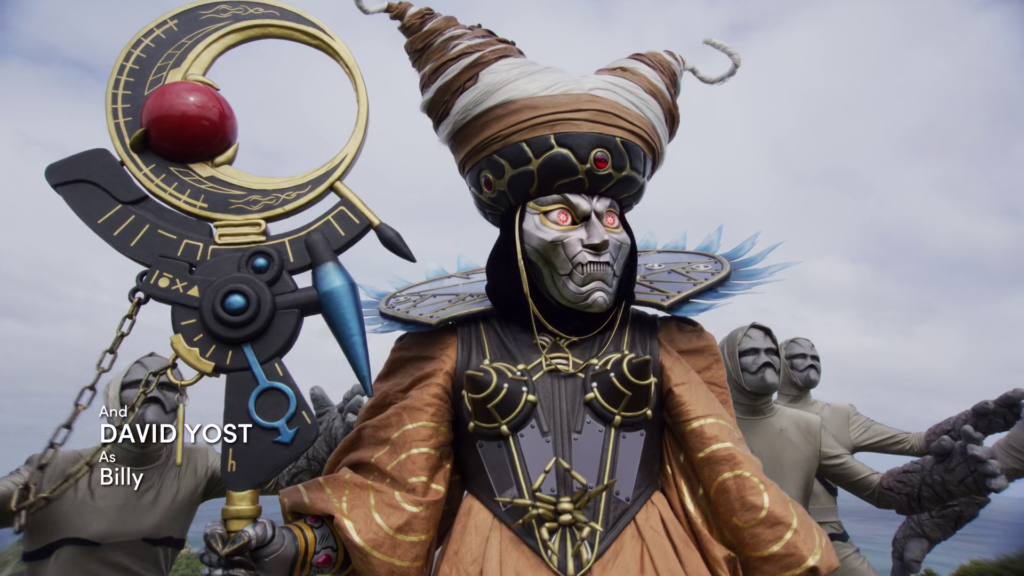
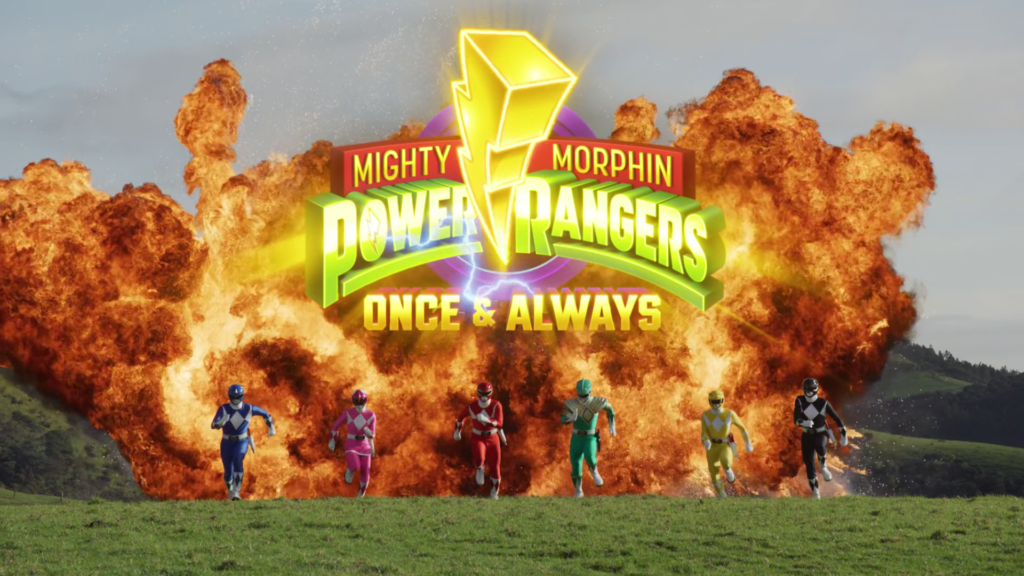
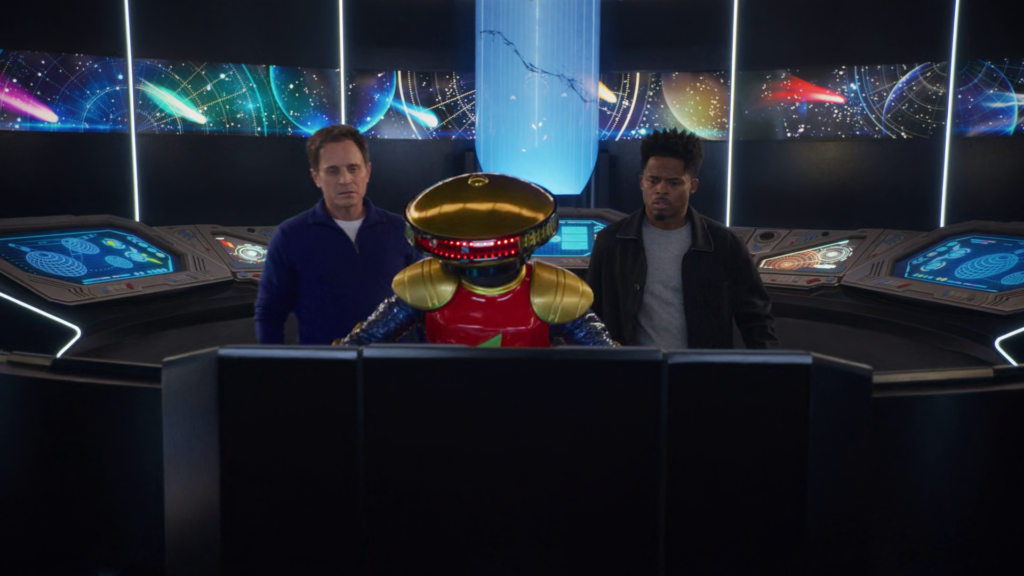
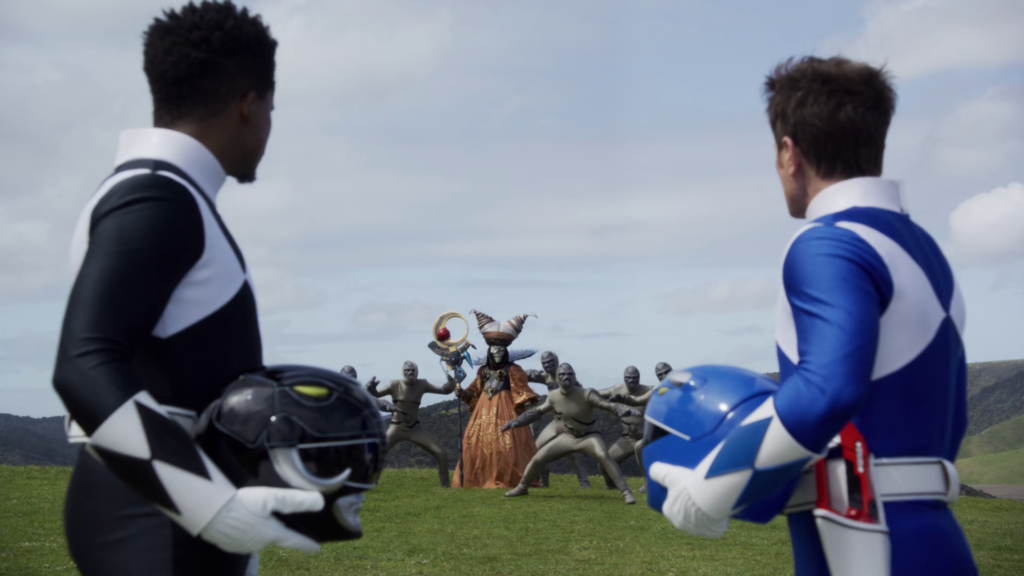

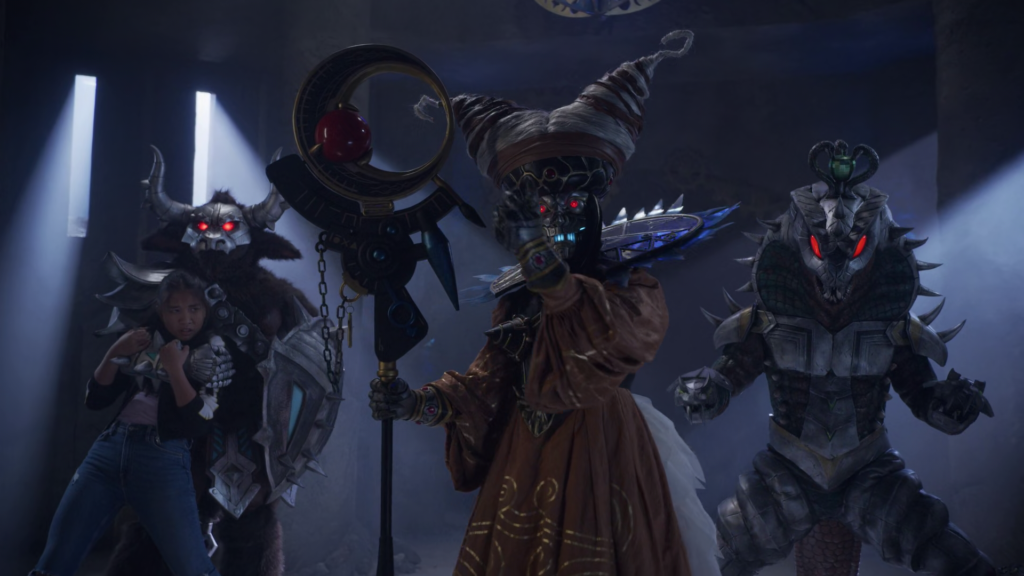
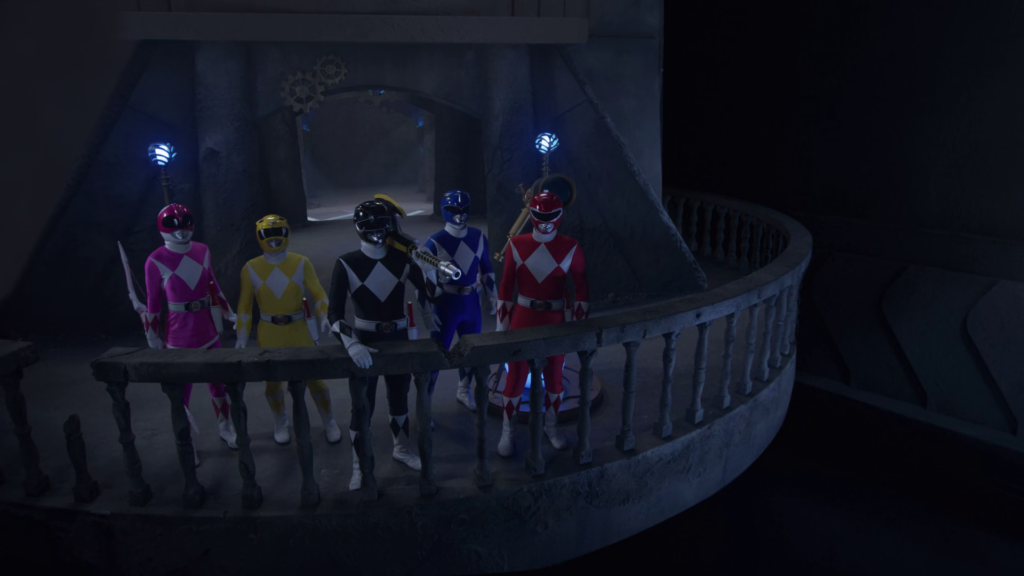
Mighty Morphin Power Rangers: Once and Always (2023)
Film review #557
Director: Charlie Haskell
SYNOPSIS: Rita Repulsa has returned in a robot body, and is out to get the original power rangers. The yellow ranger, Trini is killed when she sacrifices herself to save the blue ranger Billy. One year later, Robot Rita returns with her plan to absorb the power rangers into her new machine to take their power for herself. The rangers must reunite to take down Rita and save their friends…
THOUGHTS/ANALYSIS: Mighty Morphin’ Power Rangers: Once and Always is a 2023 special released as part of the thirtieth anniversary of the Mighty Morphin ‘ Power Rangers TV series, and the beginning of the franchise as a whole. In the opening scene, we see the power rangers in battle against Robot Rita Repulsa, and the yellow ranger, Trini, sacrificing herself to save the blue ranger Billy, which is quite a serious twist. Fast forward a year later and we see Trini’s daughter Minh being raised by Zack, the black power ranger who is now her guardian. Unfortunately, Robot Rita has returned, and has a new plan to kidnap the power rangers to fuel a new machine and absorb their power. She starts kidnapping rangers from all over the world, including the original Red, Green and Pink ranger. Zack and Billy, the black and blue rangers, enlist the help of one-time rangers Rocky and Kat to help them stop Rita’s scheme before it’s too late. The story feels very much like a typical Power Rangers plot line, and could have easily been lifted from an episode of the series. On top of that though, they add in a more mature storyline around the death of Trini, and her daughter, who is set on revenge, and exploring what it means to be a power ranger, which provides enough emotional scenes alongside the typical martial arts action. There’s a decent balance between what you expect from the franchise, and the more in-depth mature story that a now-older Power Rangers fan can enjoy too, which is nice. It’s definitely not a high-budget reboot or remake, and perhaps offers no surprises in terms of story, but it captures that silly, low budget quality of the original that still had the charm to capture children’s imaginations thirty years ago, and in some ways it’s nice that it didn’t try to be anything else.
With regards to the characters, only Zack and Billy, the original black and blue rangers return. This leads to bringing in Rocky, who succeeded as the red ranger, and Kat, who became the pink ranger. The death of Trini, the yellow ranger follows from the death of her original actress. The green ranger Tommy, Jason David Frank declined to appear, but also died shortly after the filming was done, and Austin St. John and Amy Jo Johnson, the original red and pink ranger) also declined to appear. All in all, the cast is very much half complete, and that’s before you include that the original Rita Repulsa and Zordon actors also passed away, and while Zordon did not return, the voice for Rita’s robotic replacement is quite a solid performance. The cast of Power Rangers has always been a revolving door of actors as they leave and a new one takes on the suit, and this special tries to both reference them all, while still focusing on the original team. As such, even if you’re a Power Rangers fan, you might not recognise all the references and characters if you didn’t watch past a certain point in the series. Despite this, Rocky and Kat play their characters well, and while the acting is sometimes a bit flat and cheesy, again it’s what you expect from the series. The special does feel like it has to navigate around the missing cast a bit to try and fit everything together, but at it’s heart it’s still a typical Power Rangers story that’s simple enough to follow.
All the typical beats and action are here in this special: from the hand-to-hand combat with Rita’s goons, the Rangers fighting with the weapons, and the Megazord fight, everything is here that you would expect, along with the cheesy one-liners to go with them. It’s really a love letter to the franchise that captures the feel of the Power Rangers, while also reflecting on some more mature and emotional story elements that the now-older fanbase can appreciate. If you want a reboot, you can watch the 2017 Power Rangers movie, but Once and Always is one for those who watched the original series on Saturday mornings and had their imaginations captured. I was never a huge Power Rangers fan as a kid (I always preferred cartoons over live-action shows), but even as a sometimes fan, I found plenty in here that was entertaining enough, and allowed me to remember the series fondly. It’s full of references and everything Power Rangers, and while you’re probably not missing out on much by not watching it, it’s still entertaining enough, and a fitting tribute to those actors who are no longer with us. As the special concludes with: Once a ranger, always a ranger…

